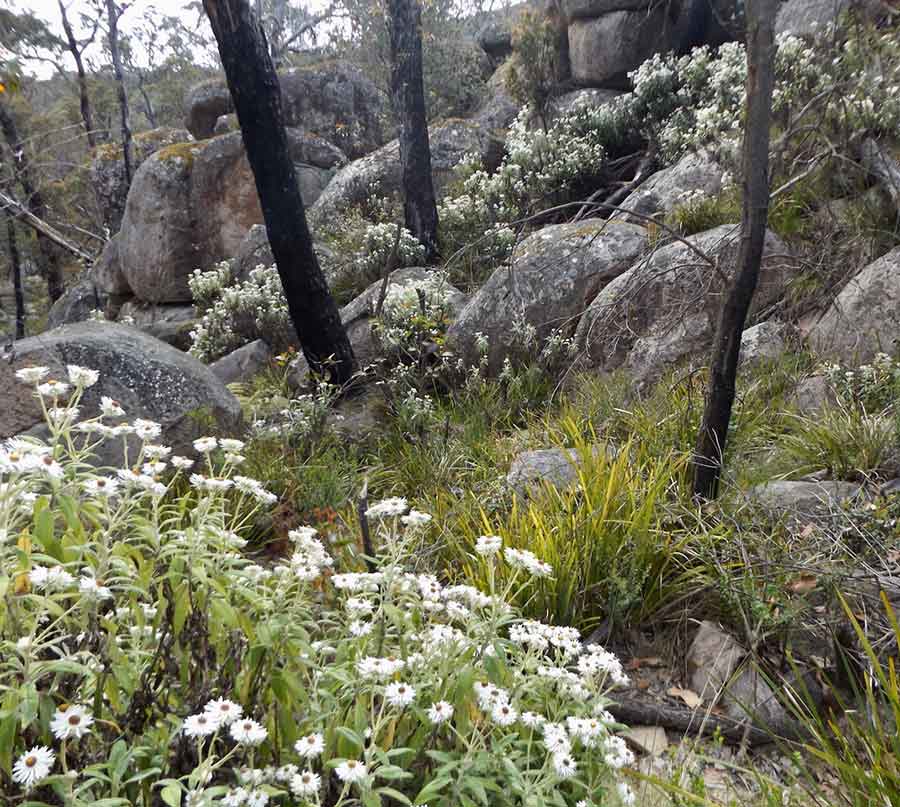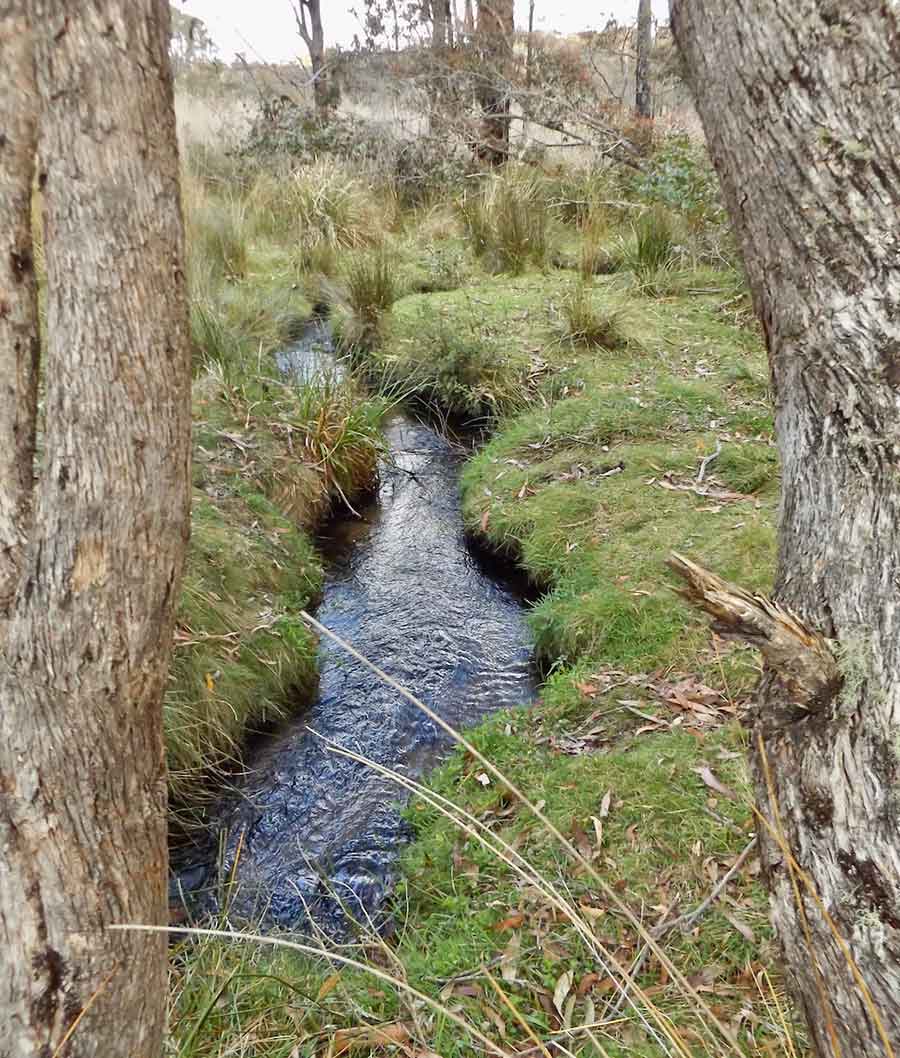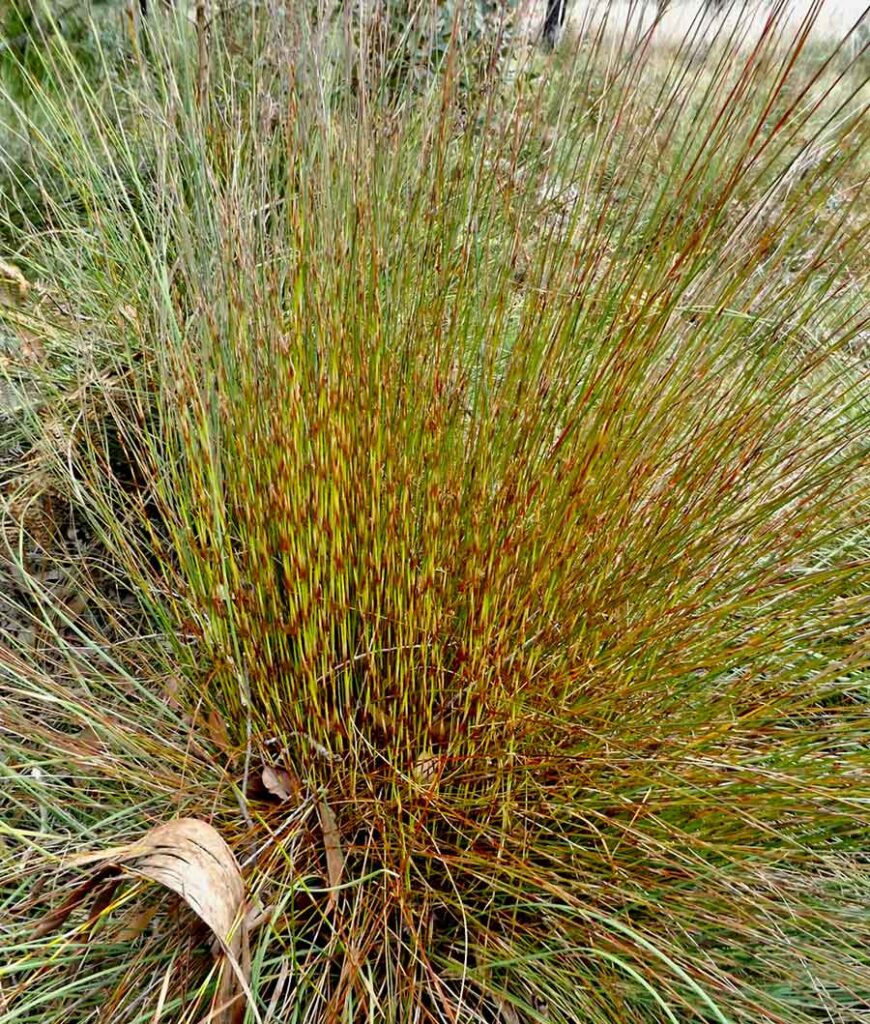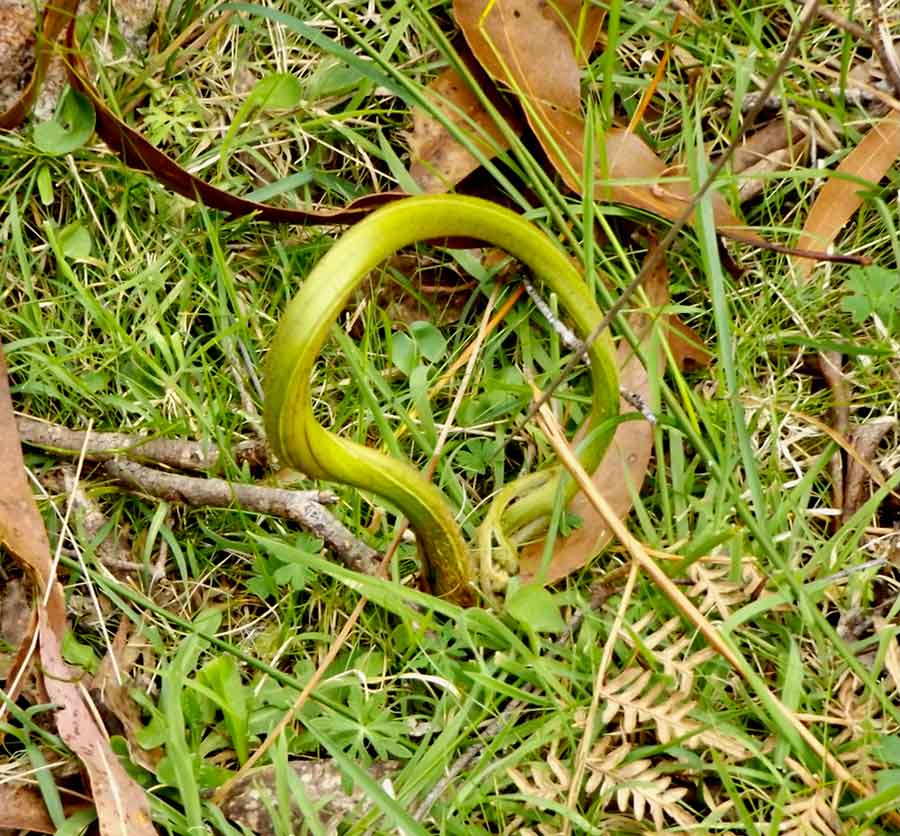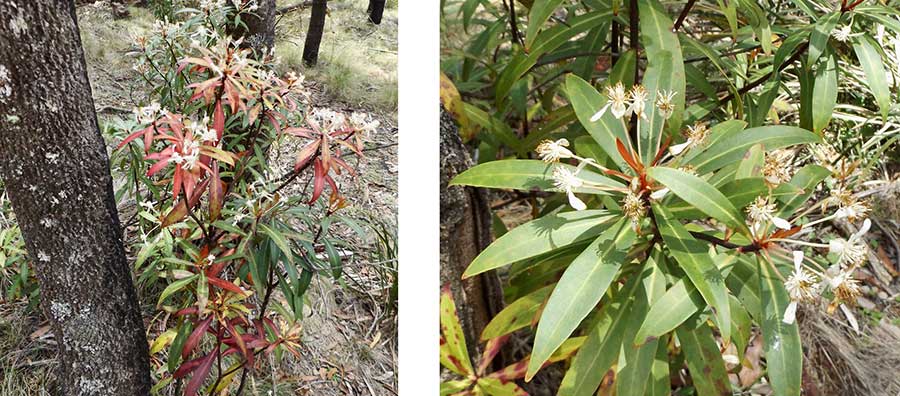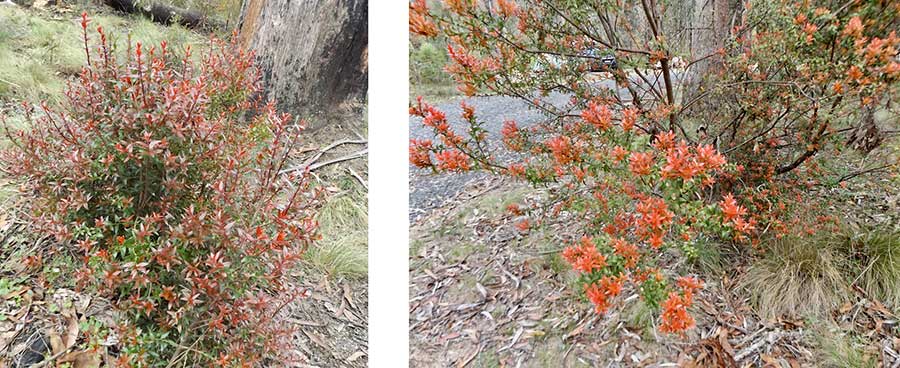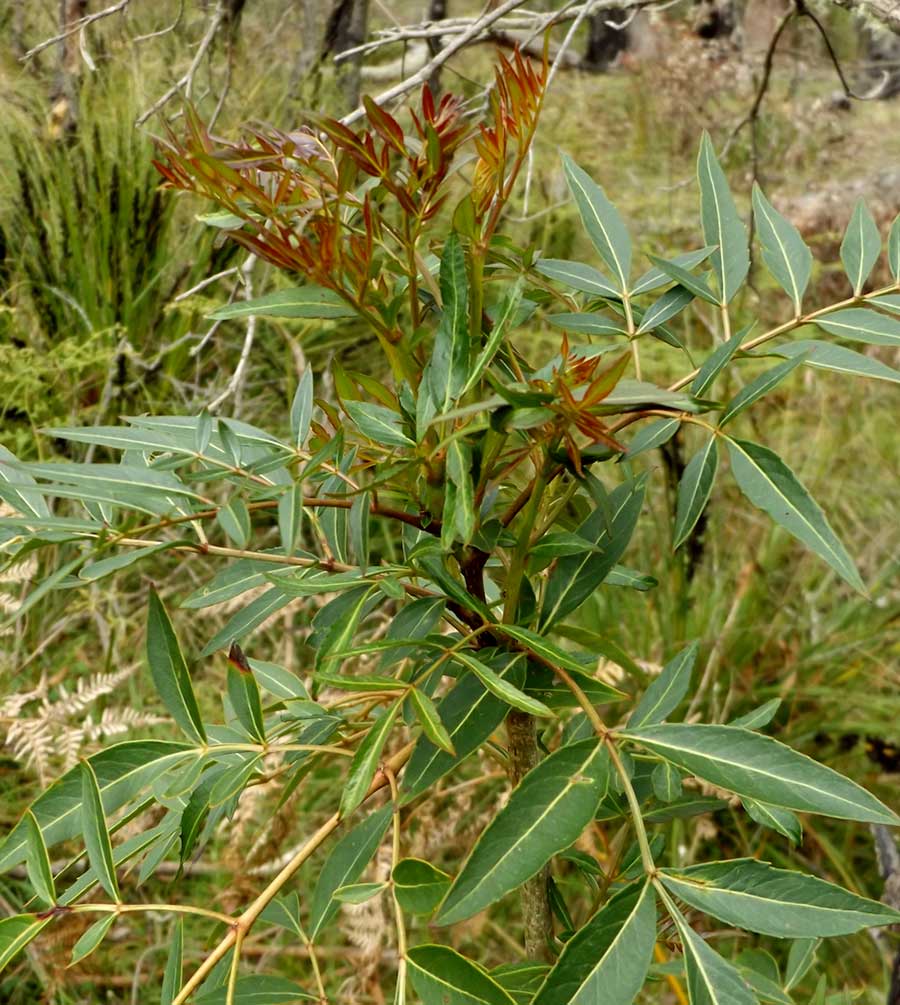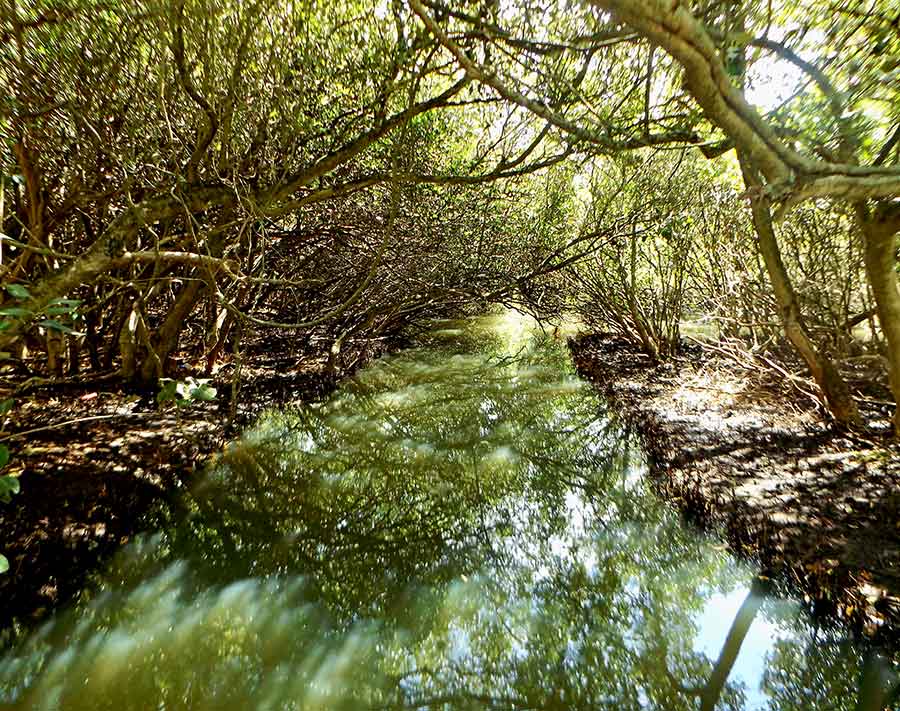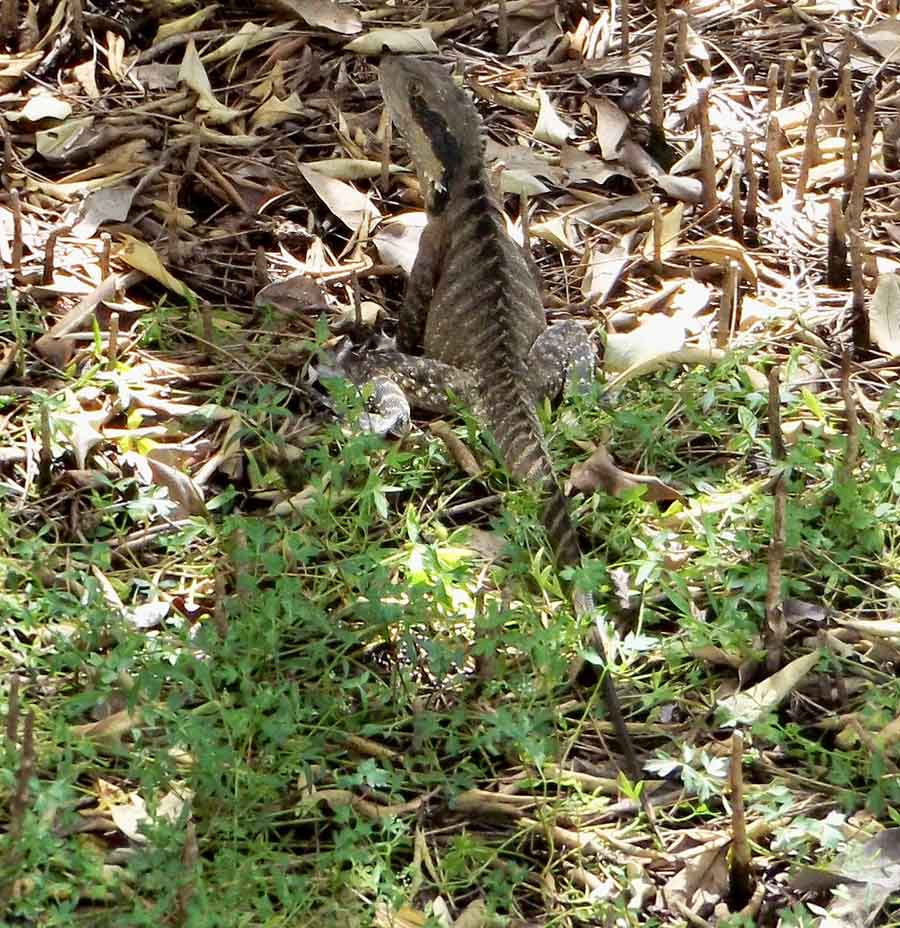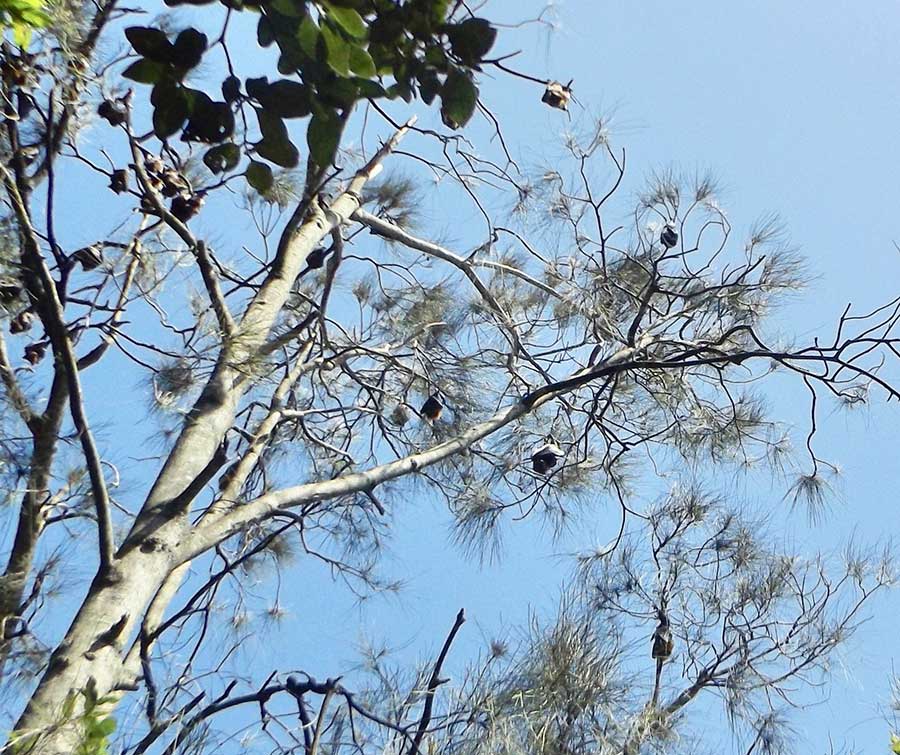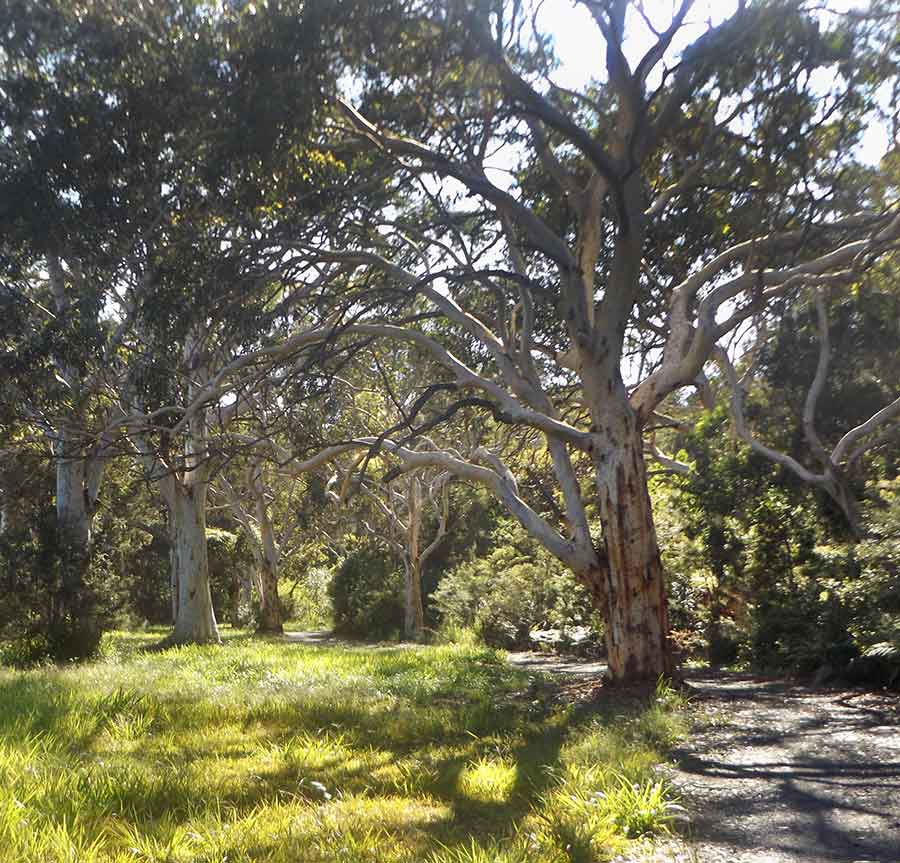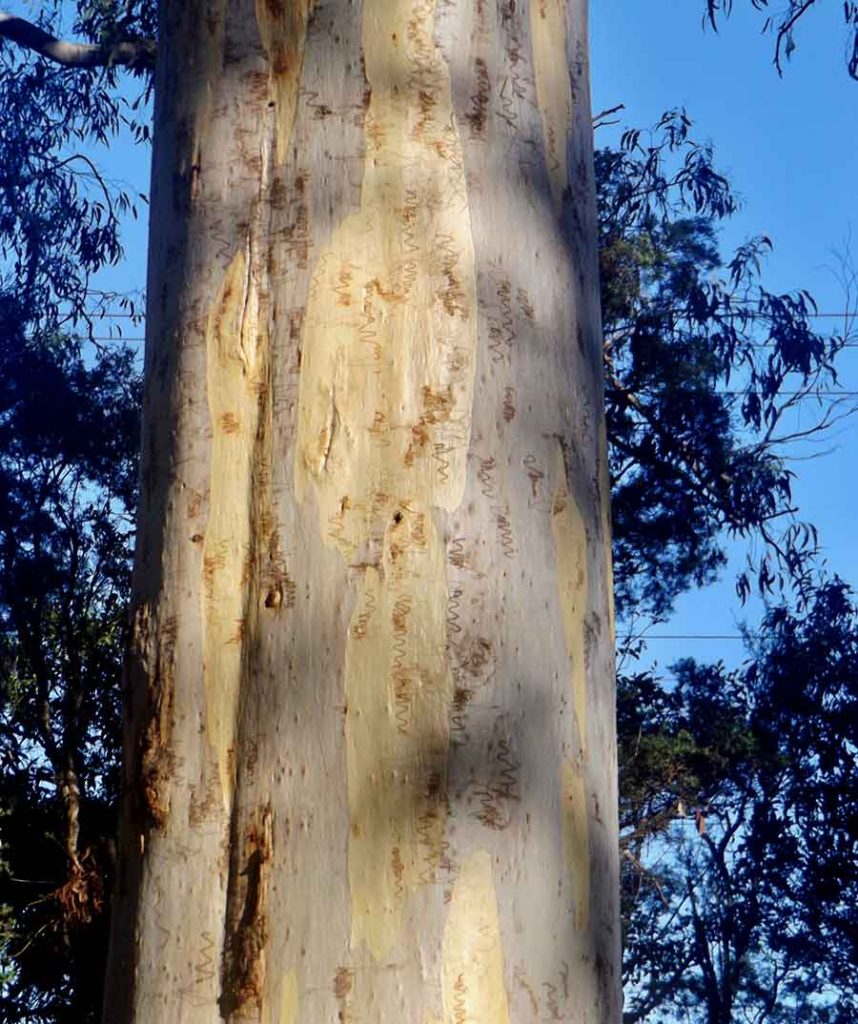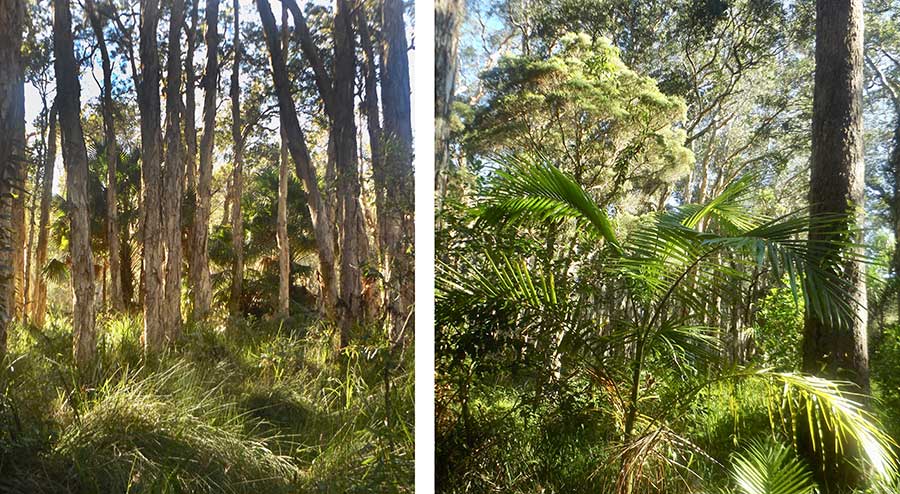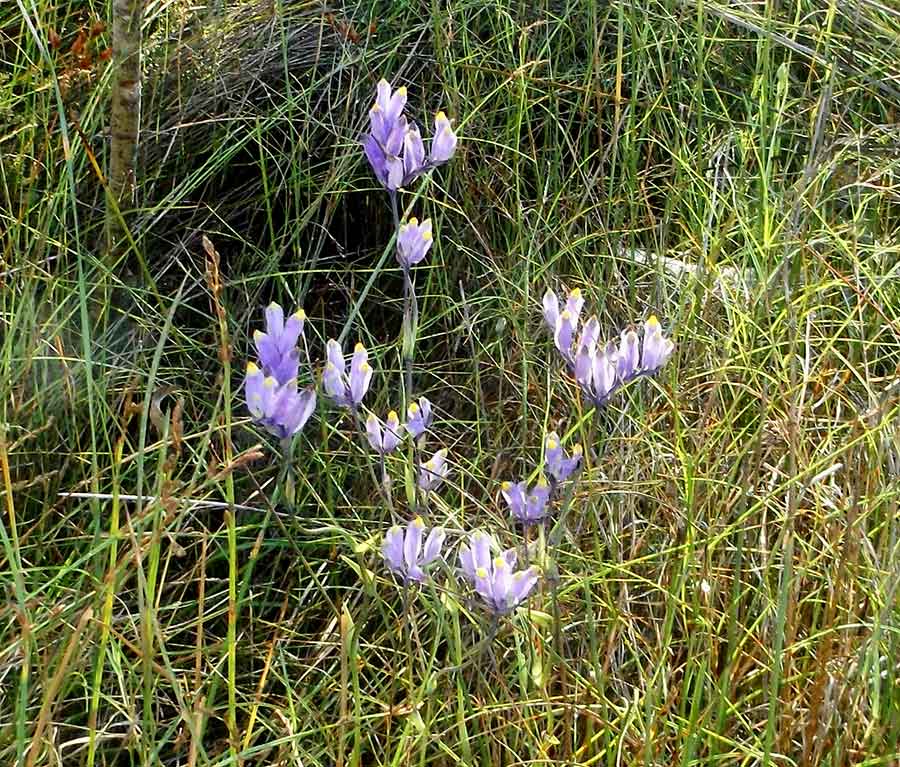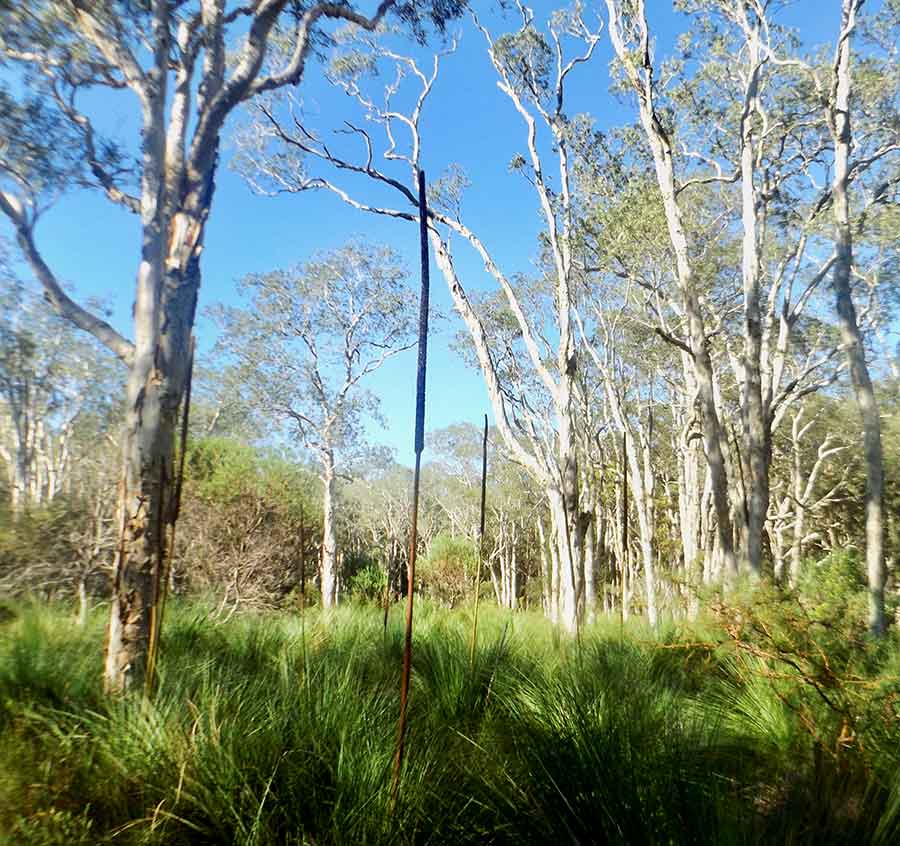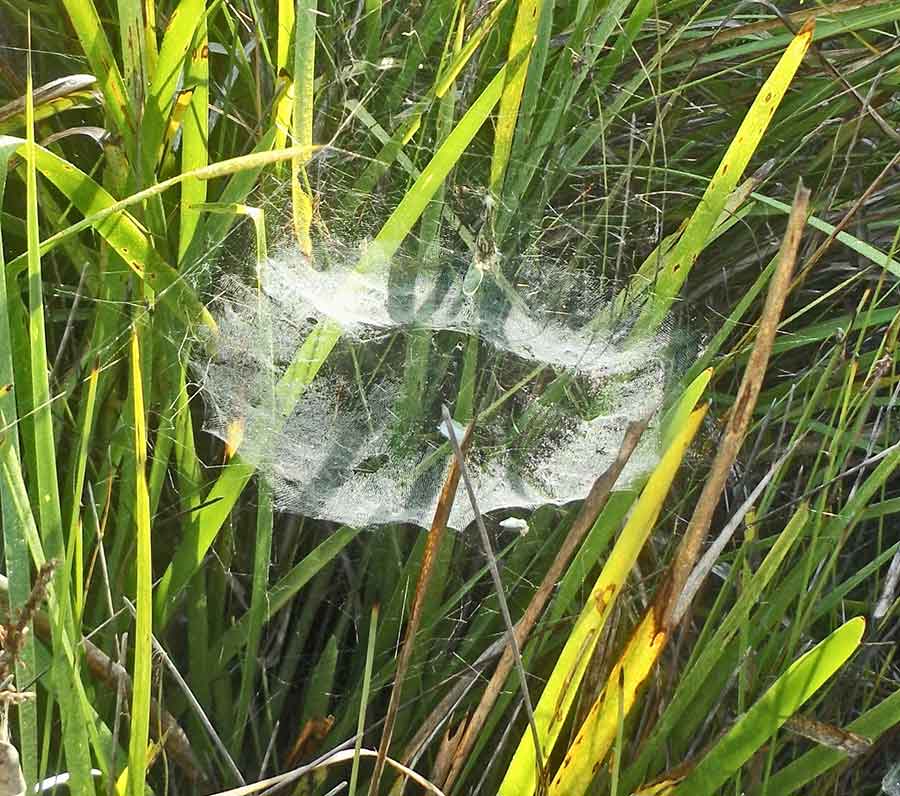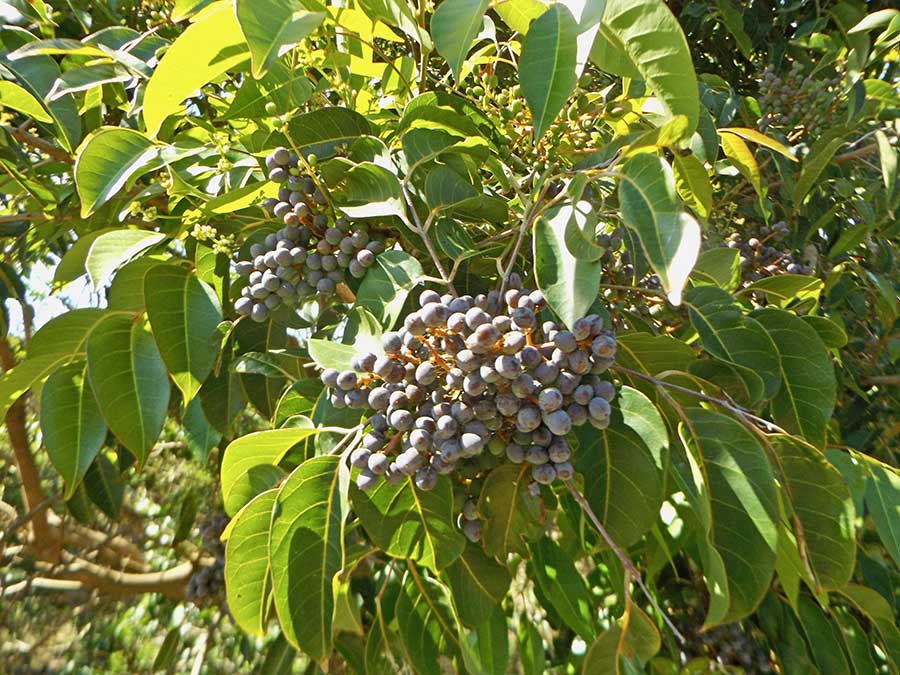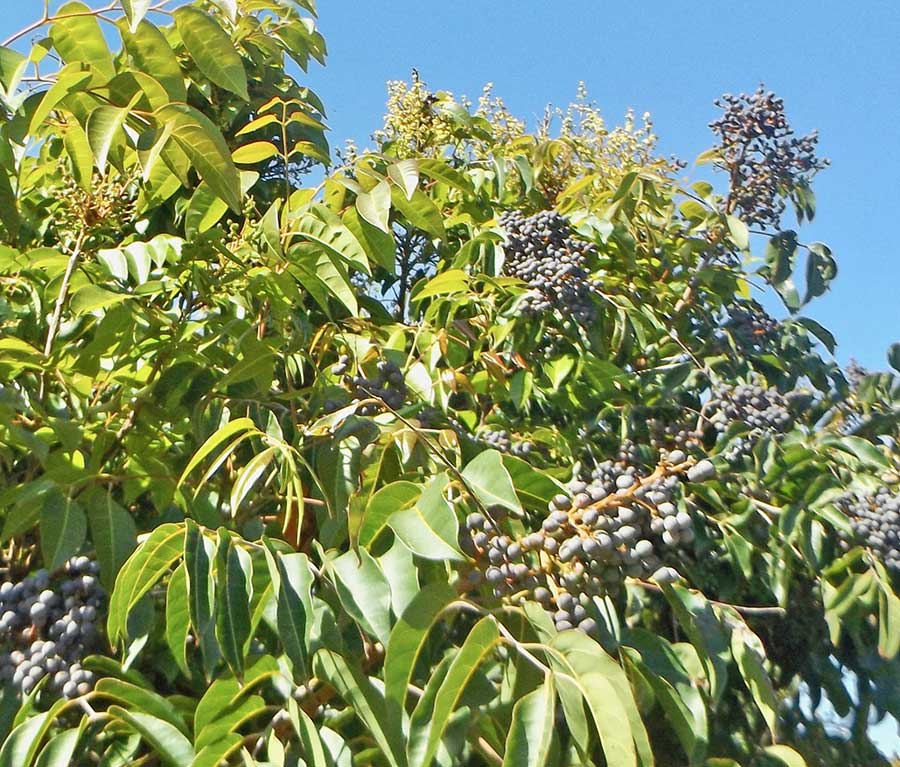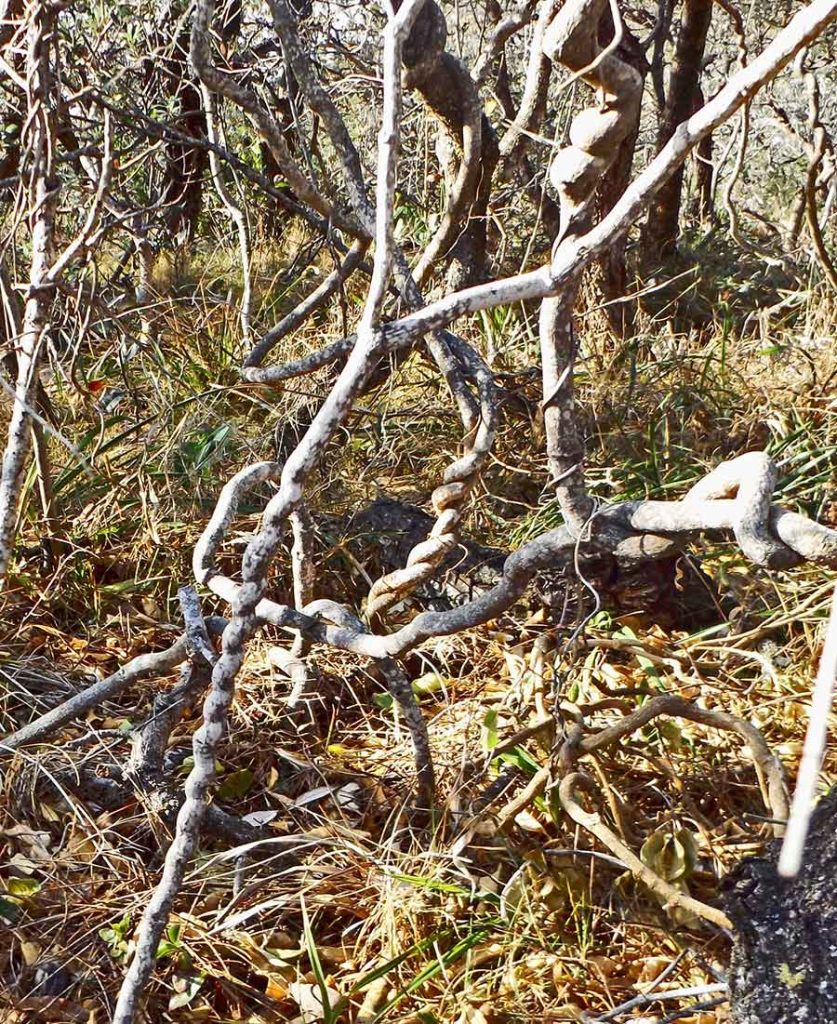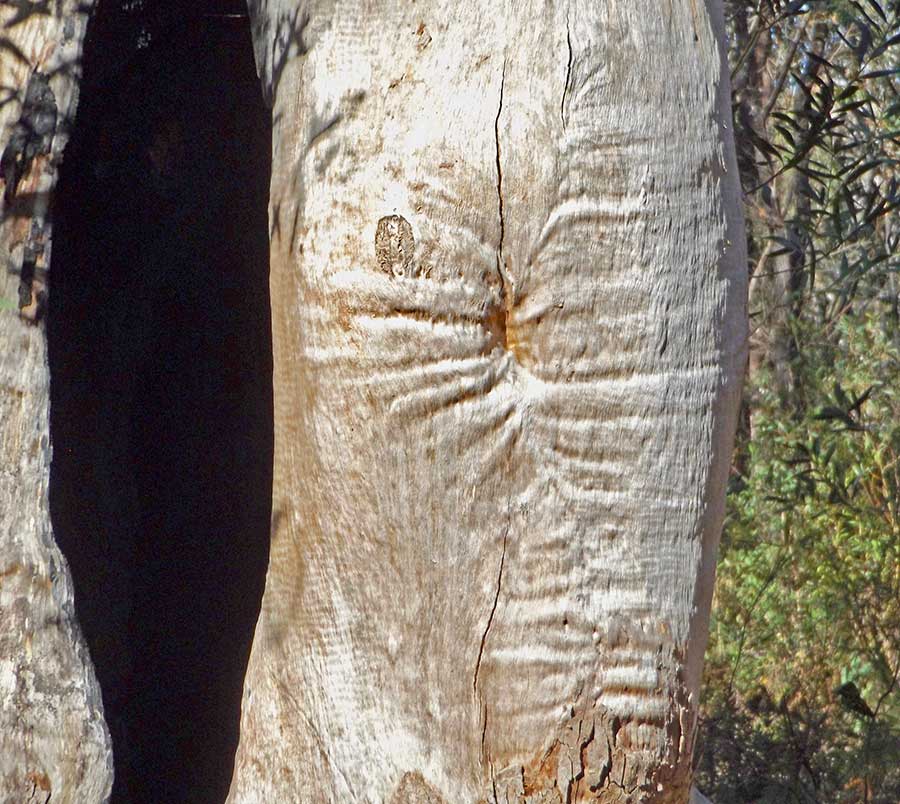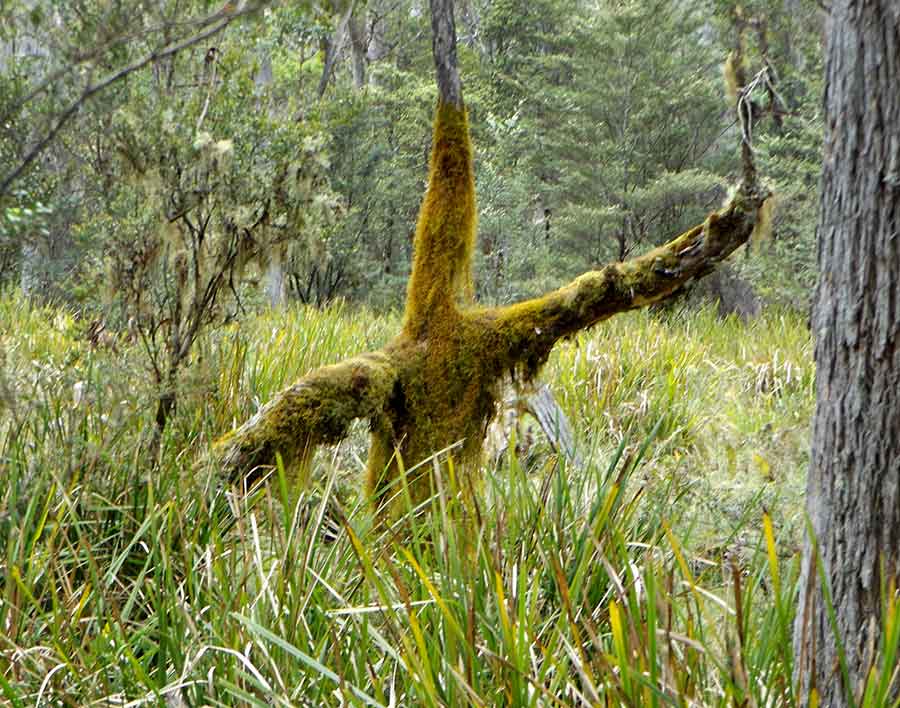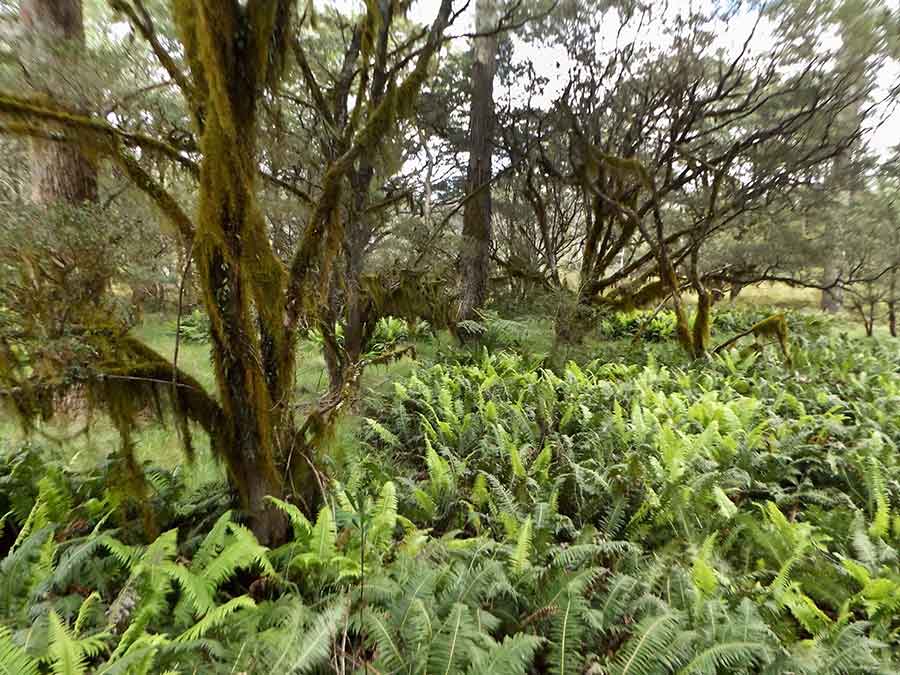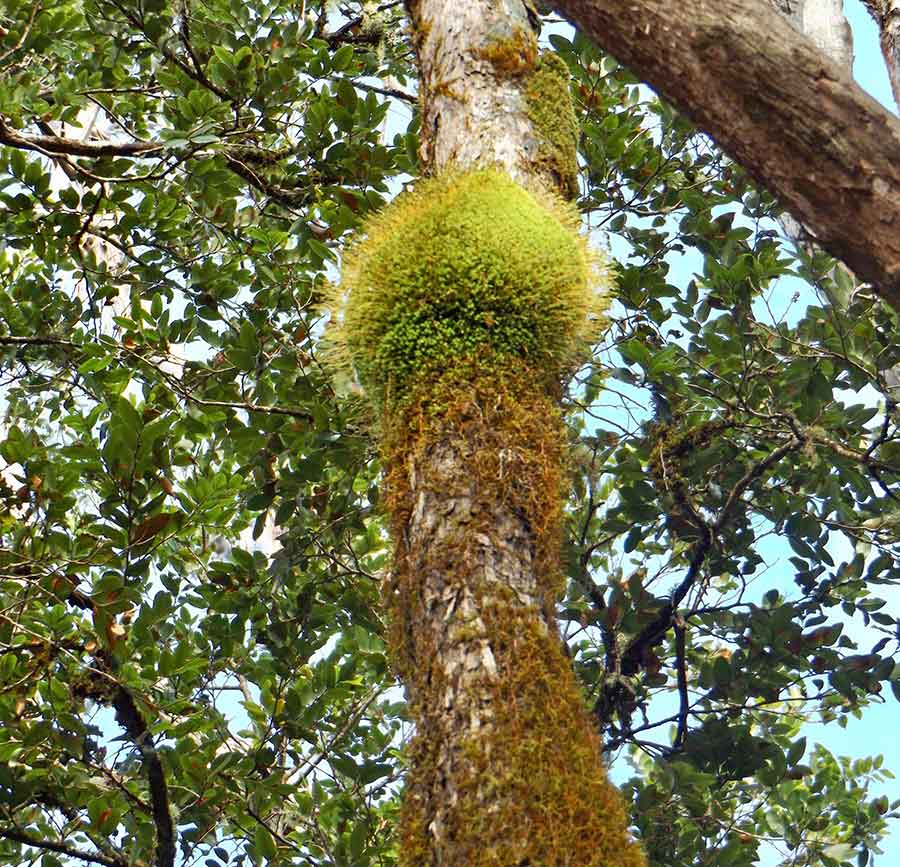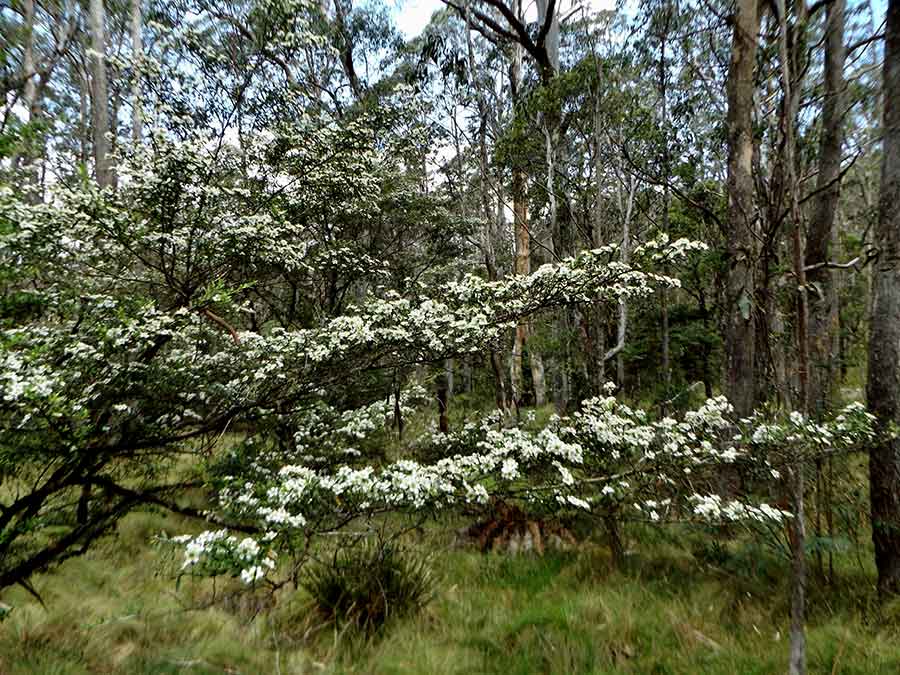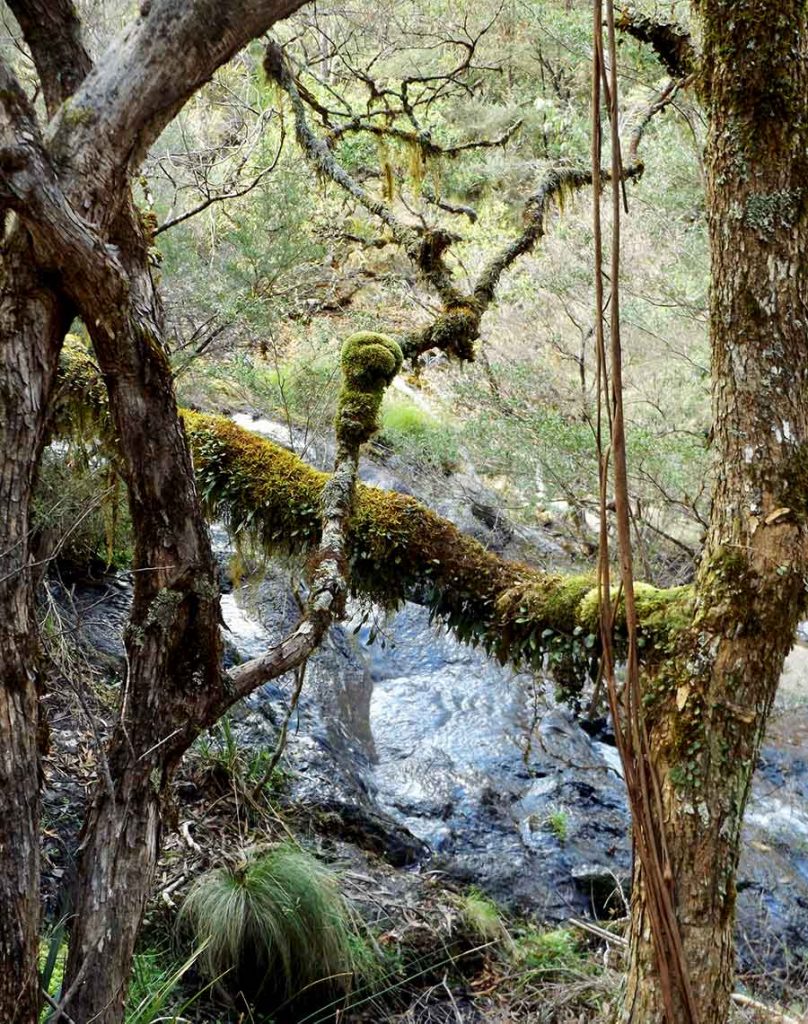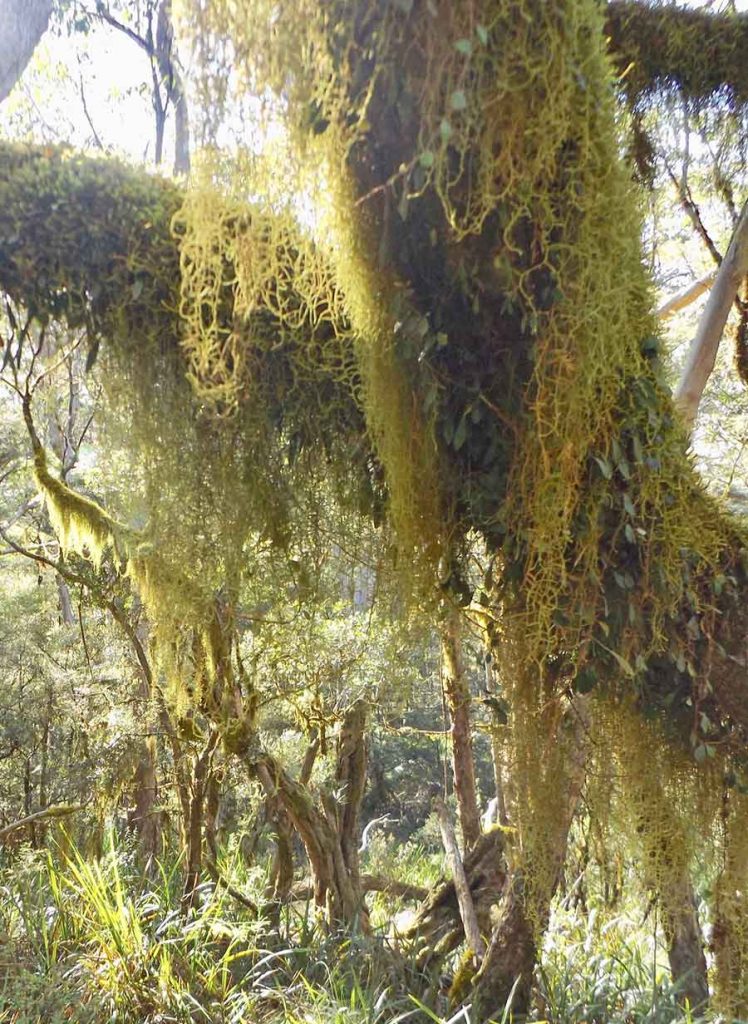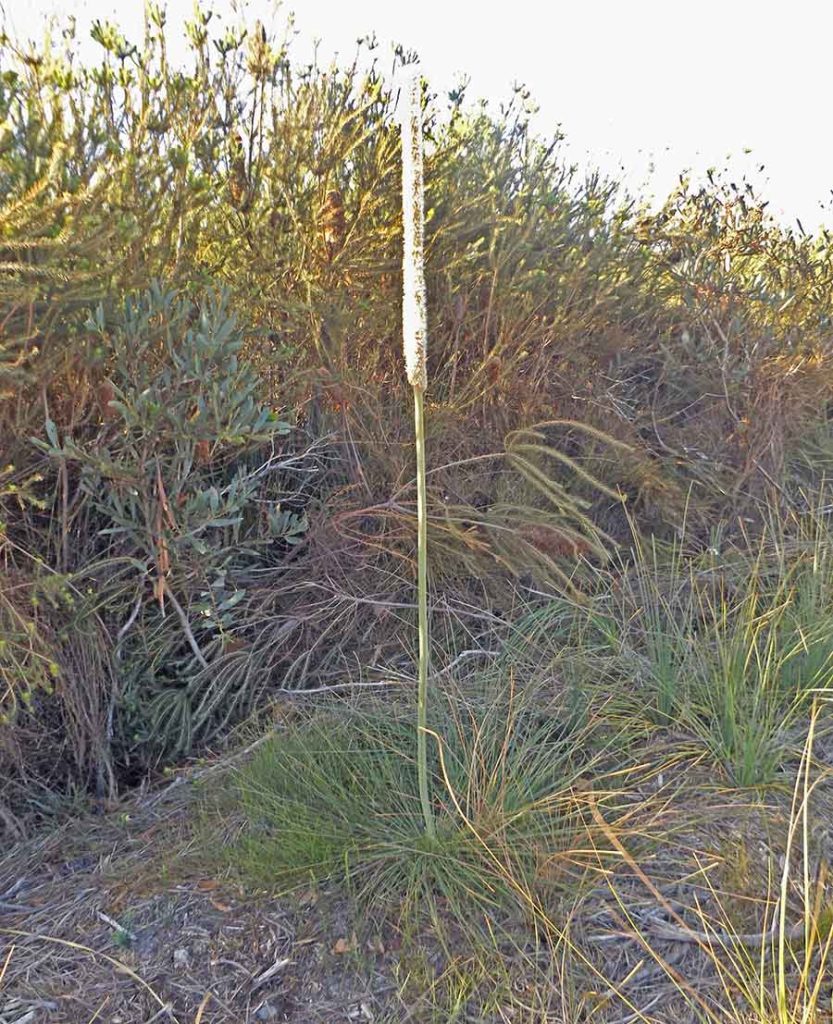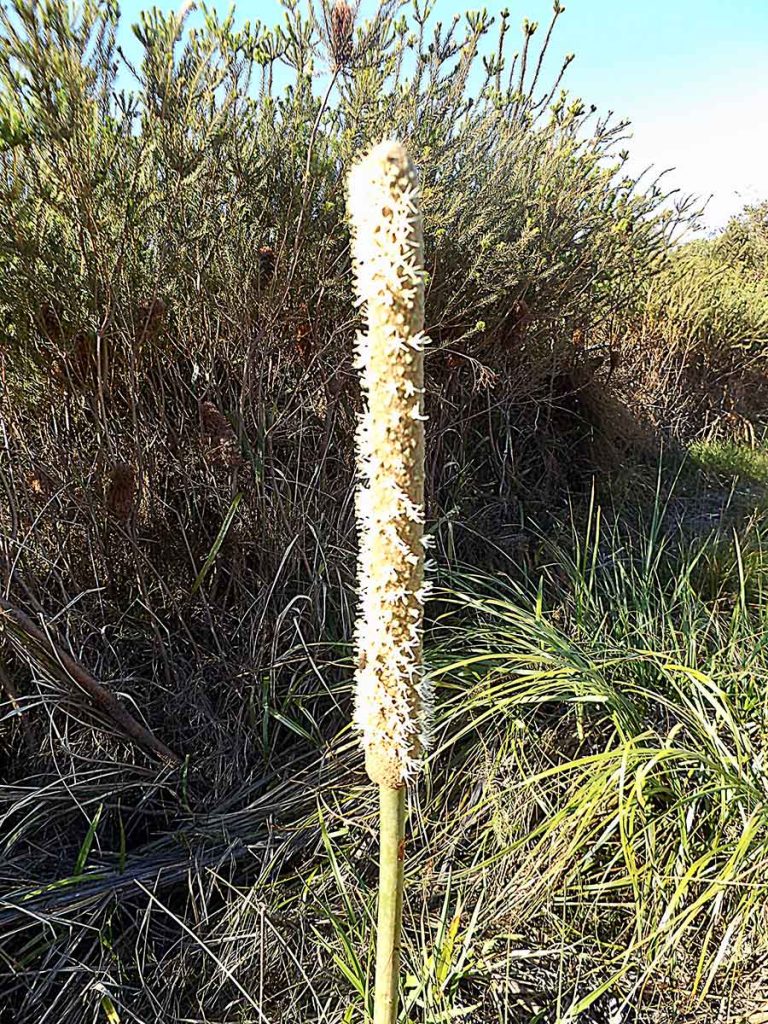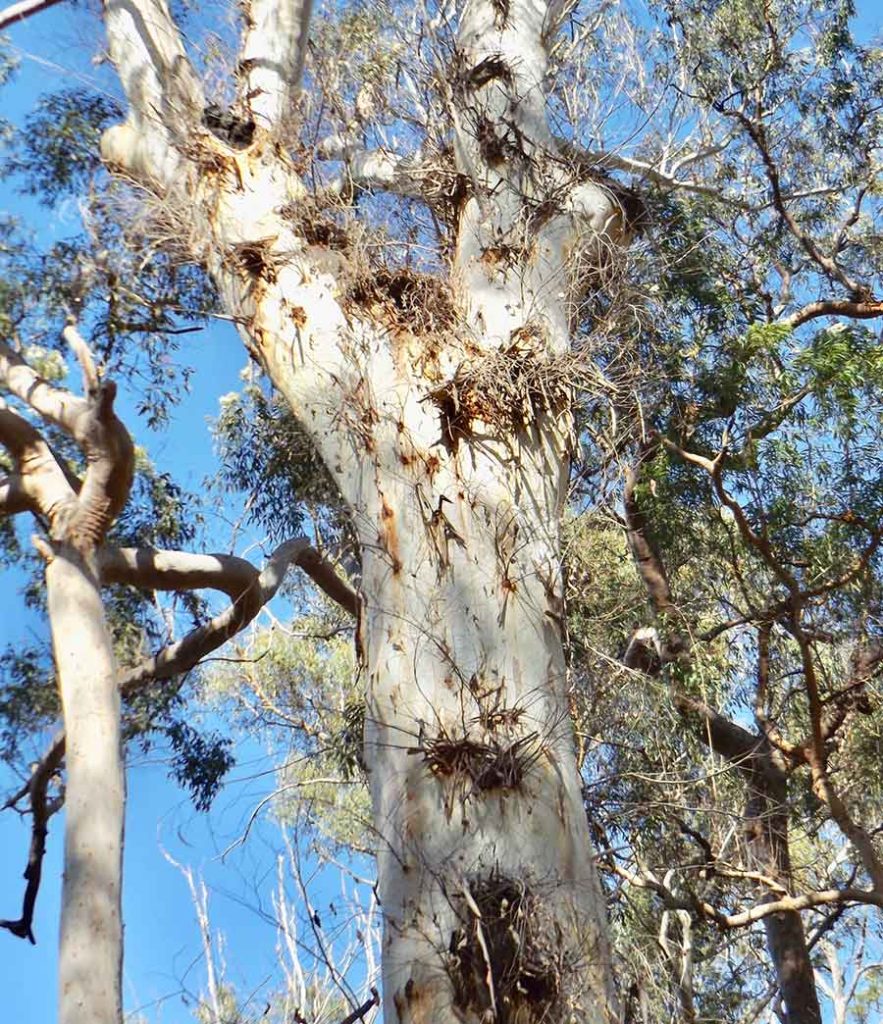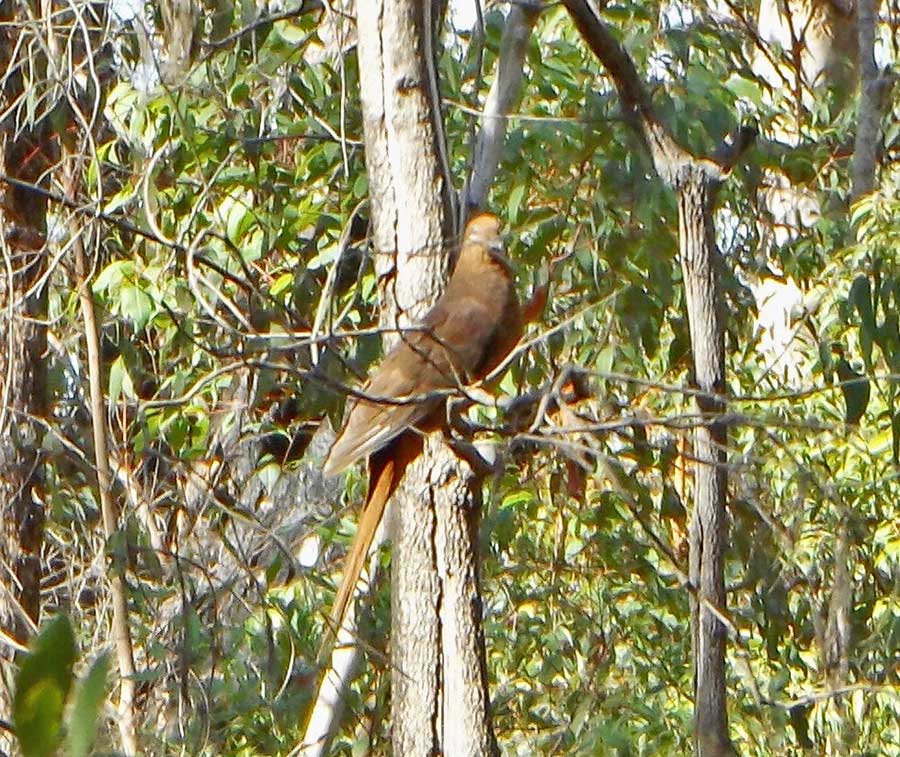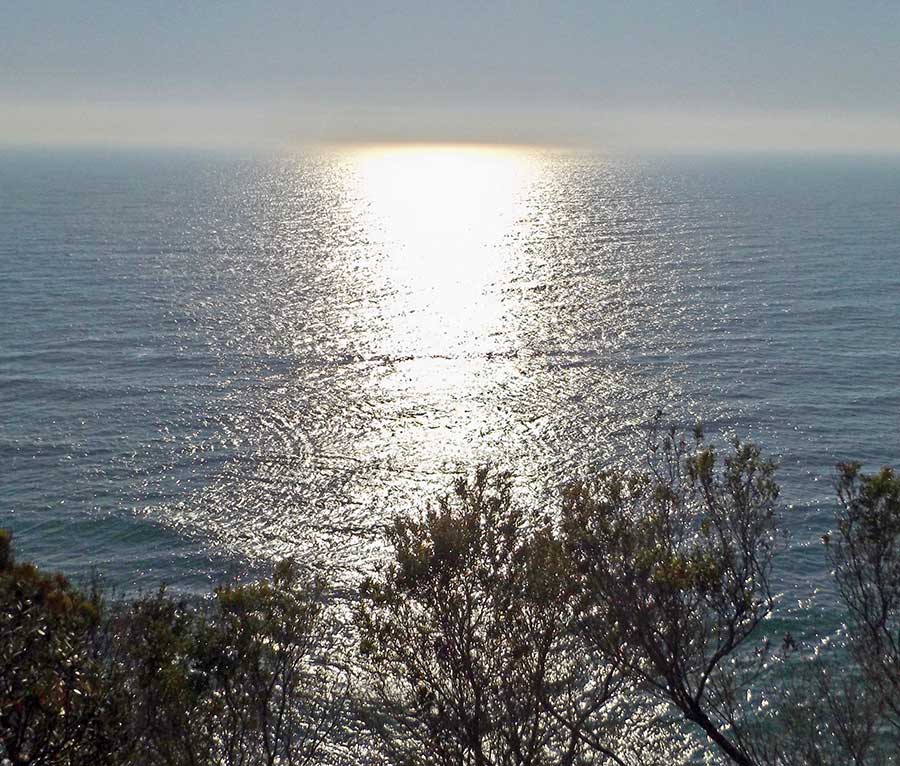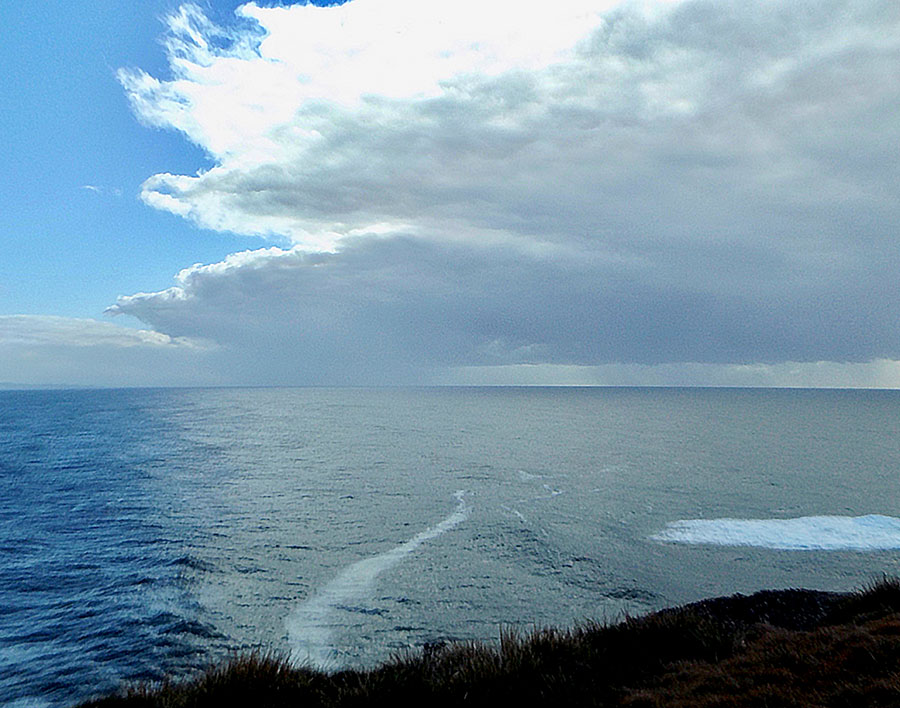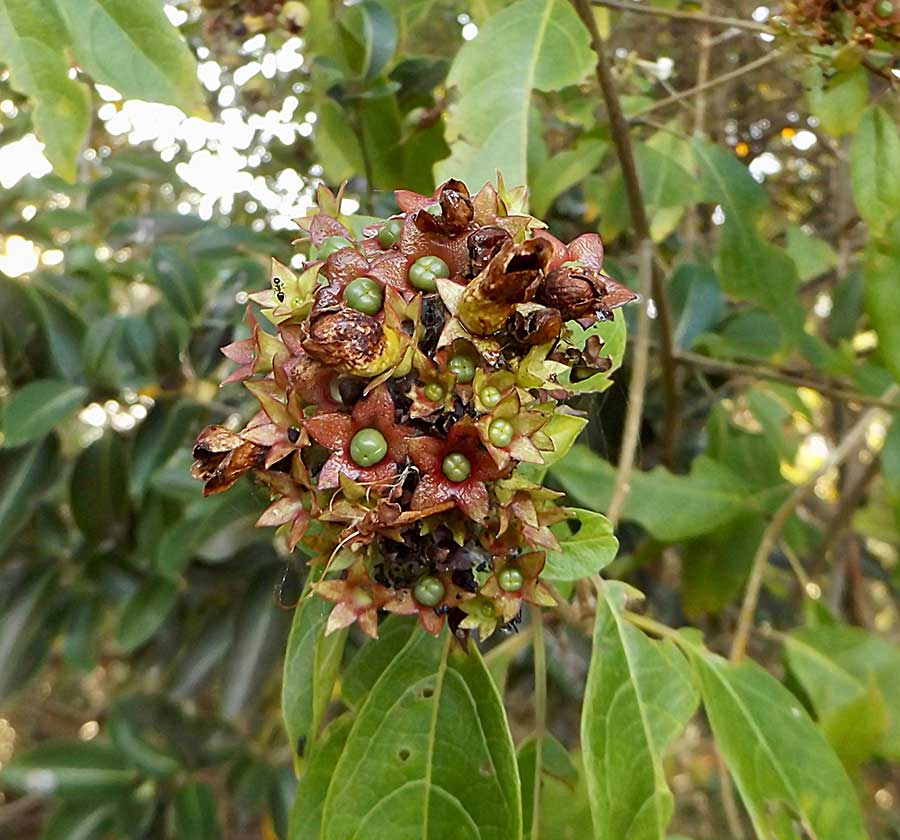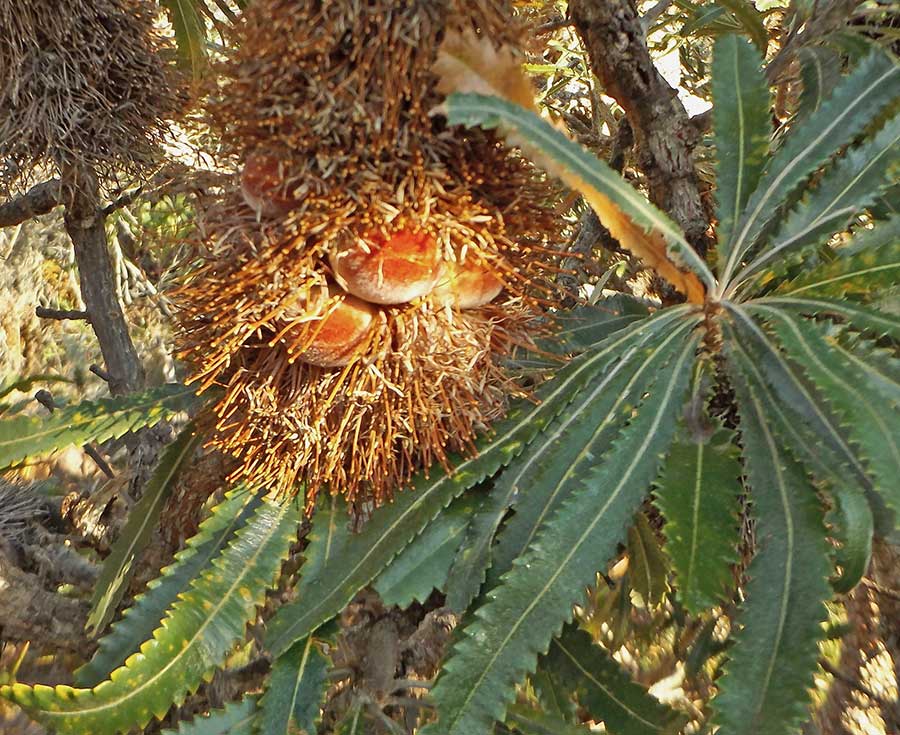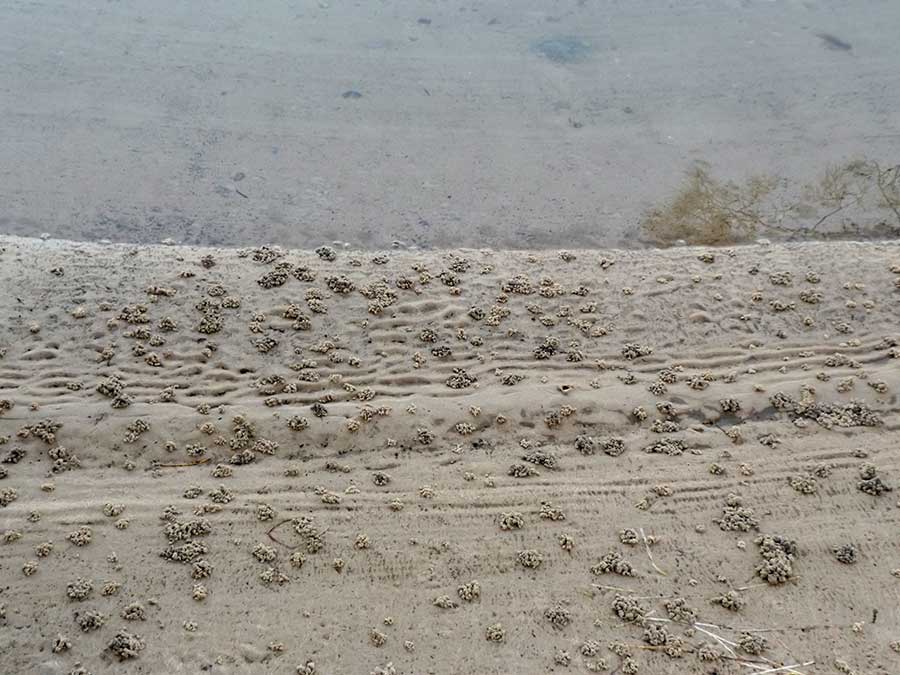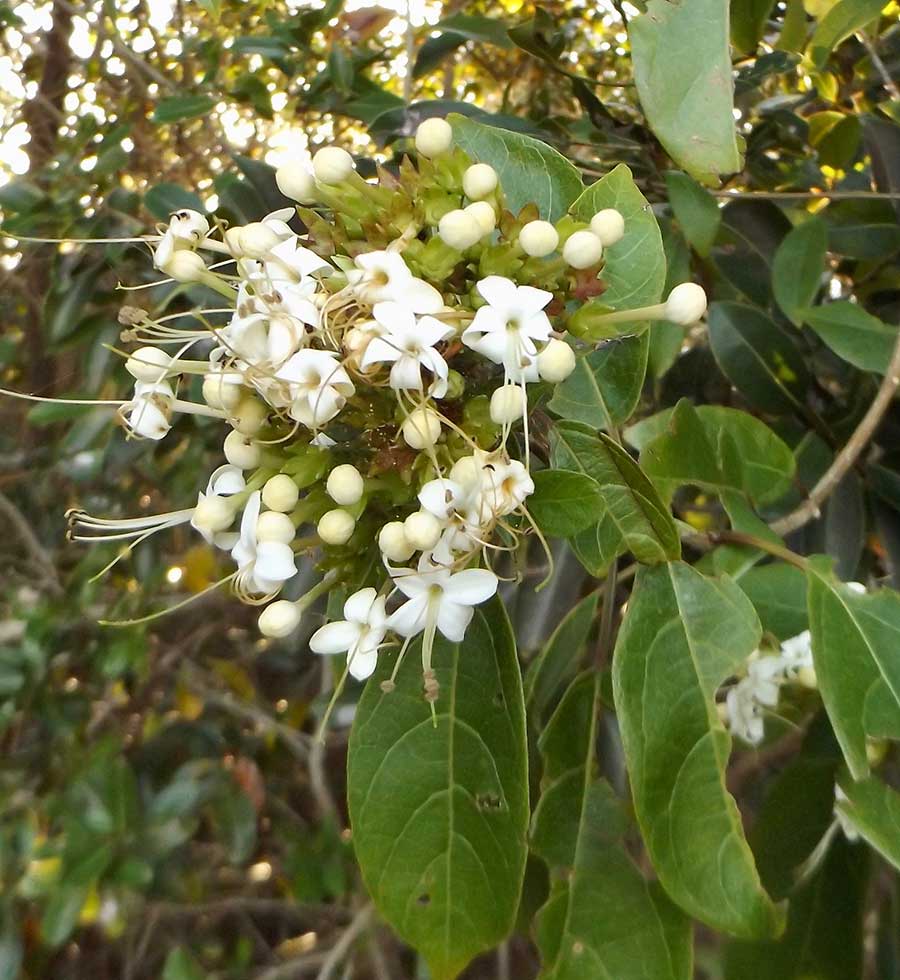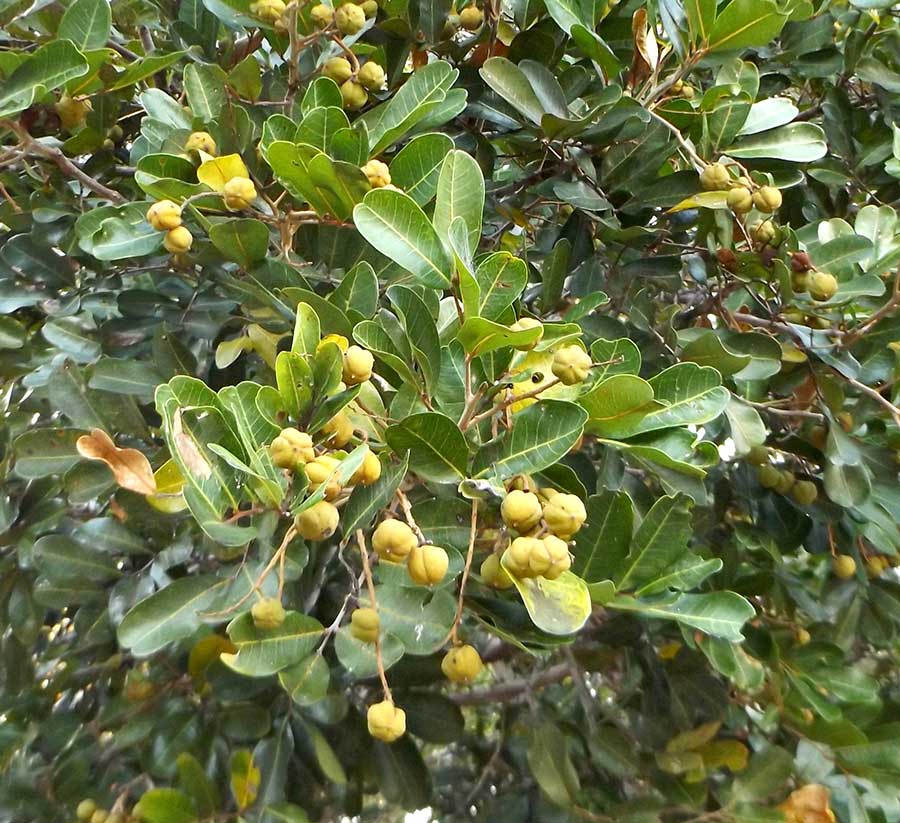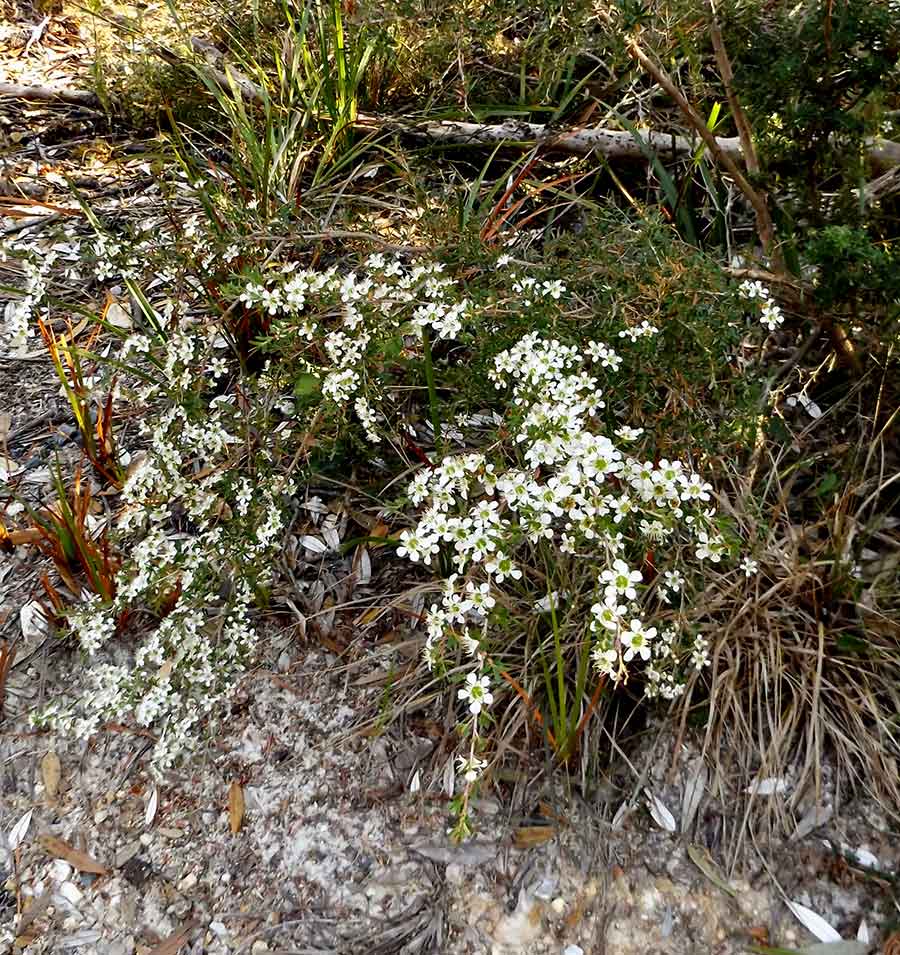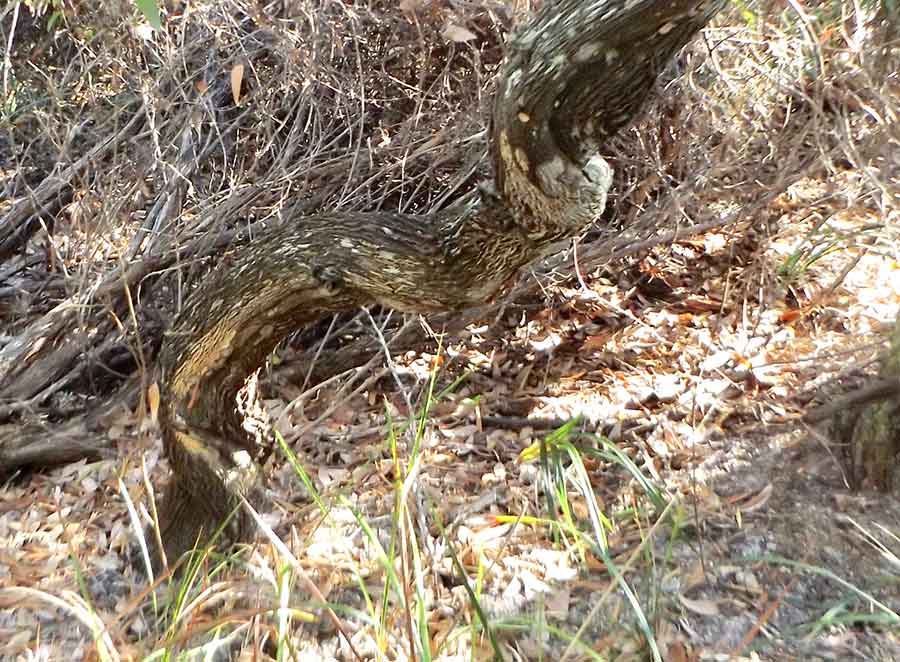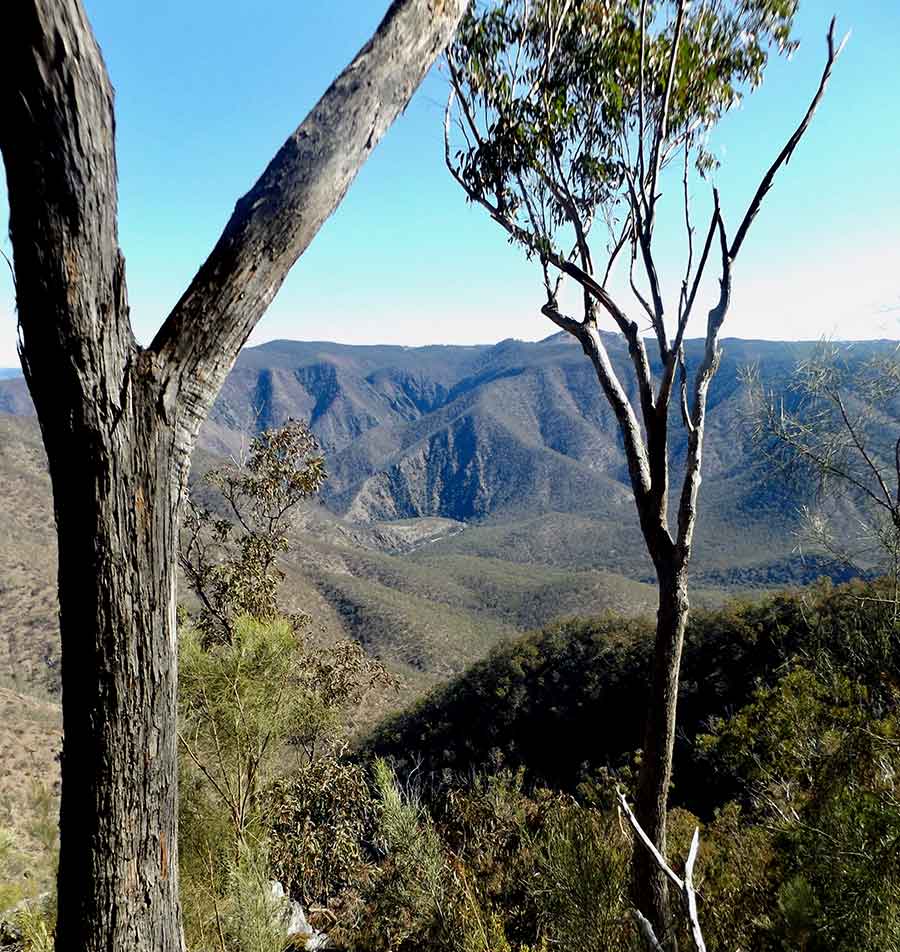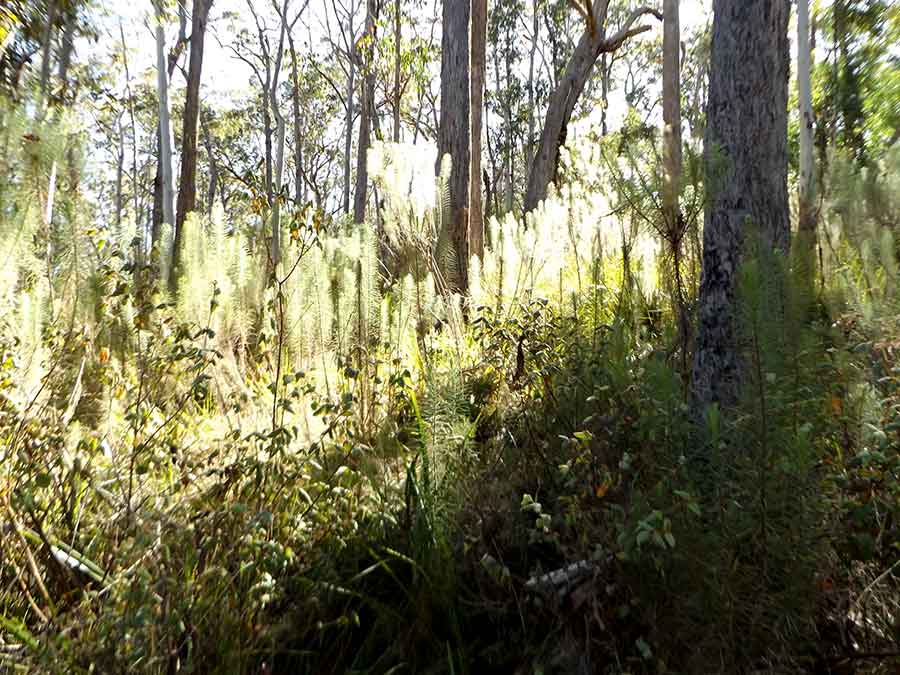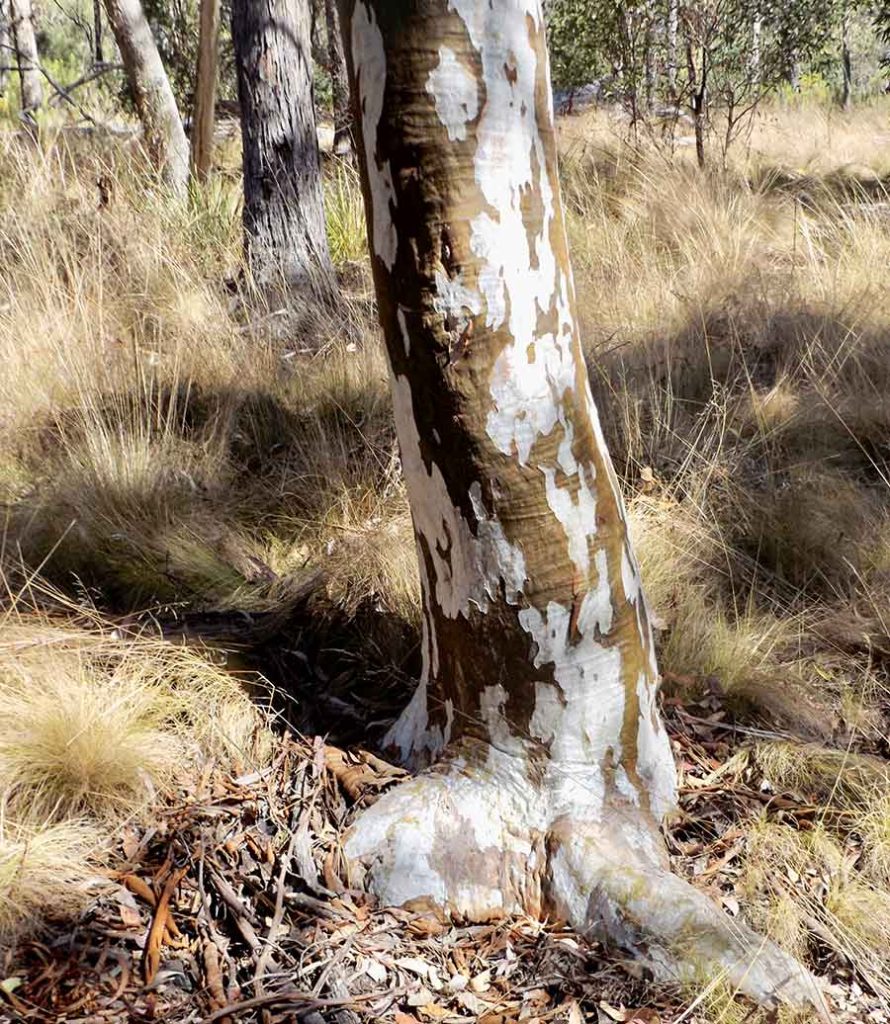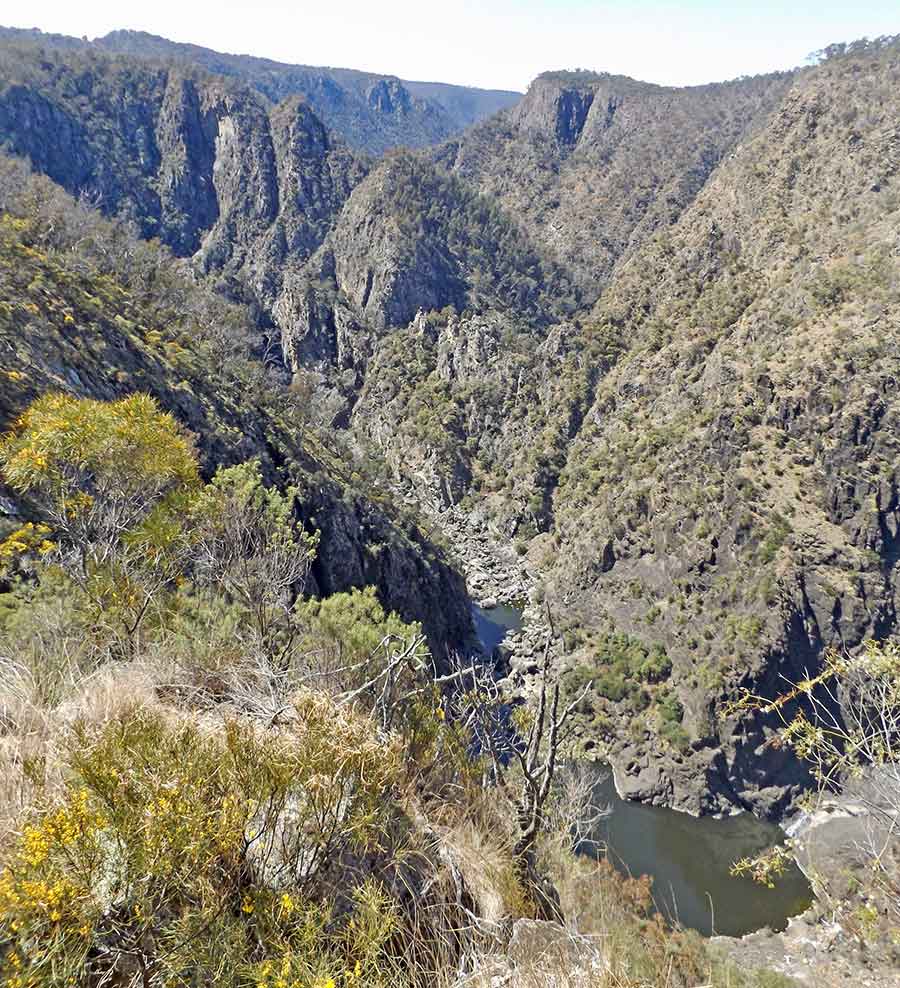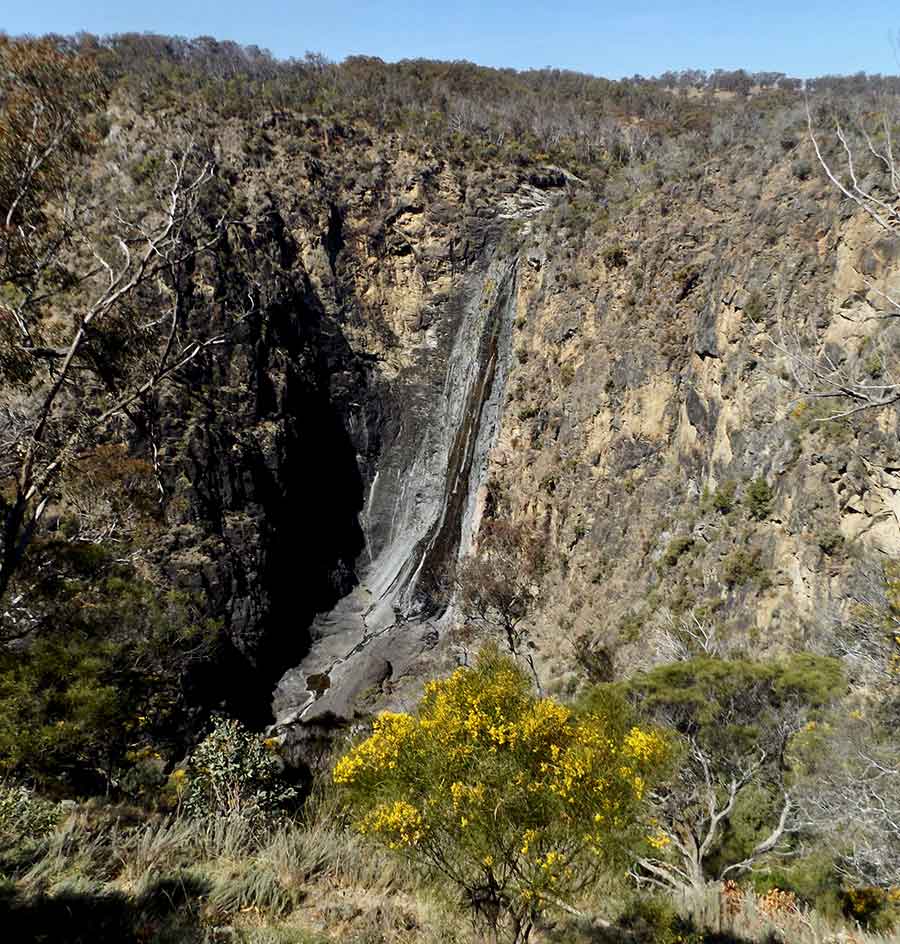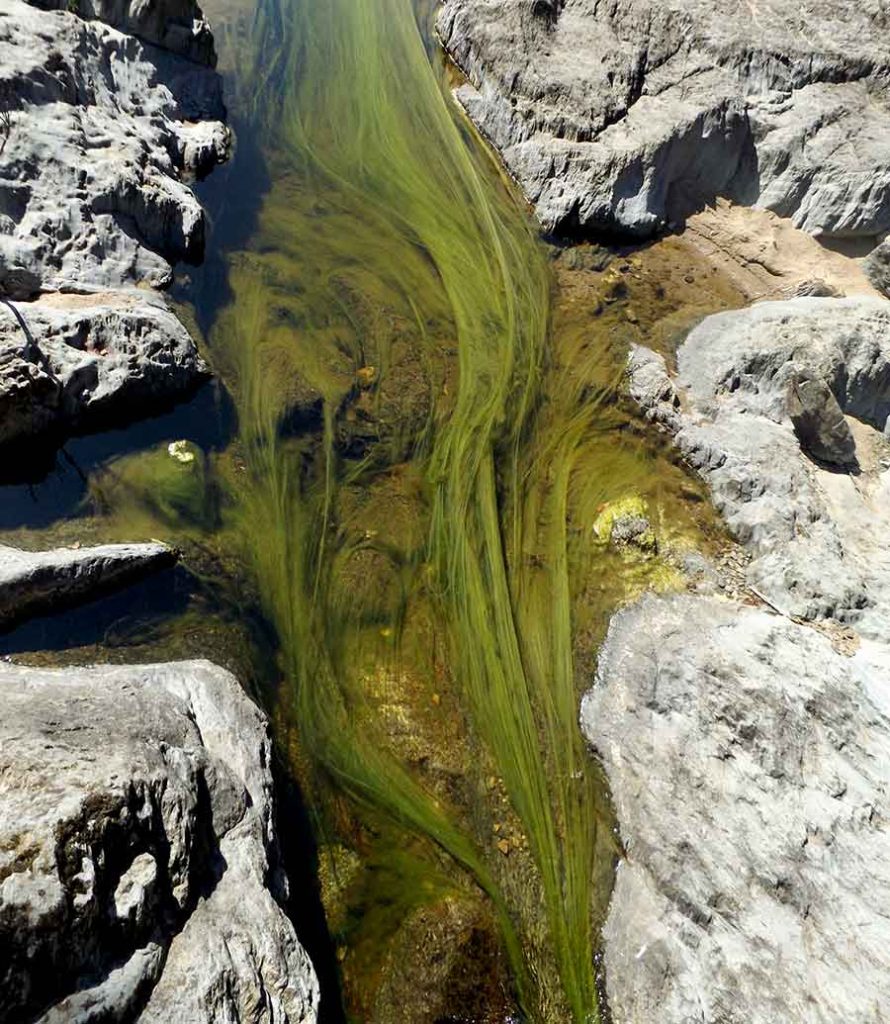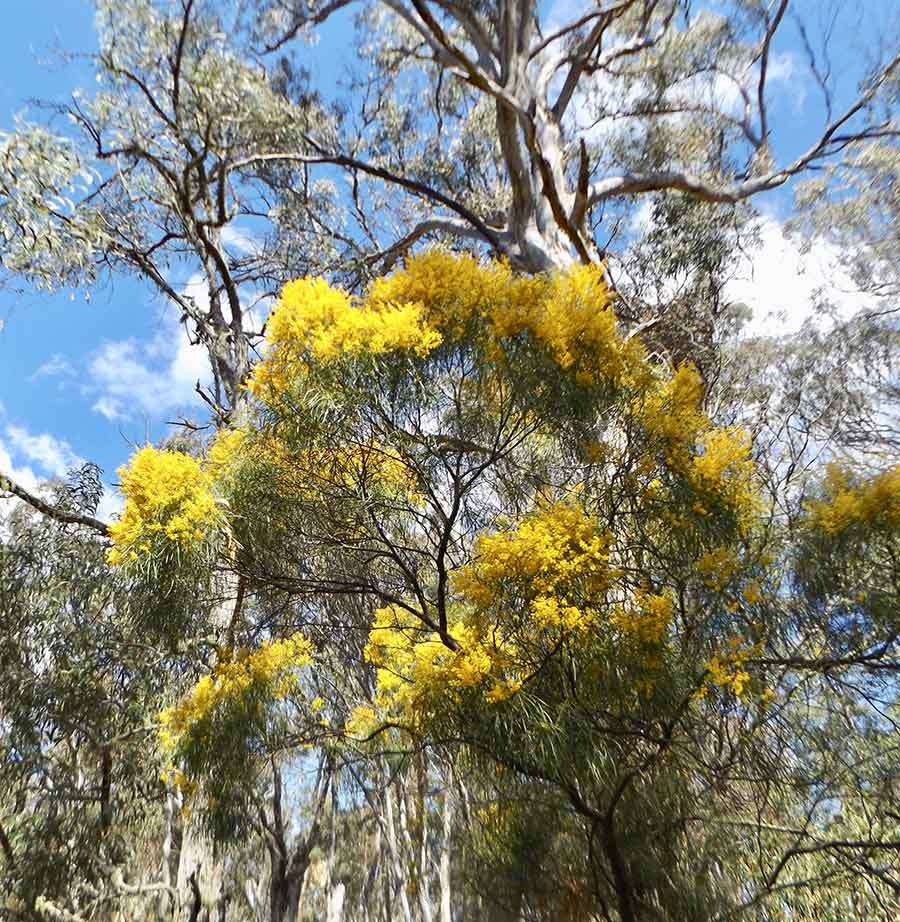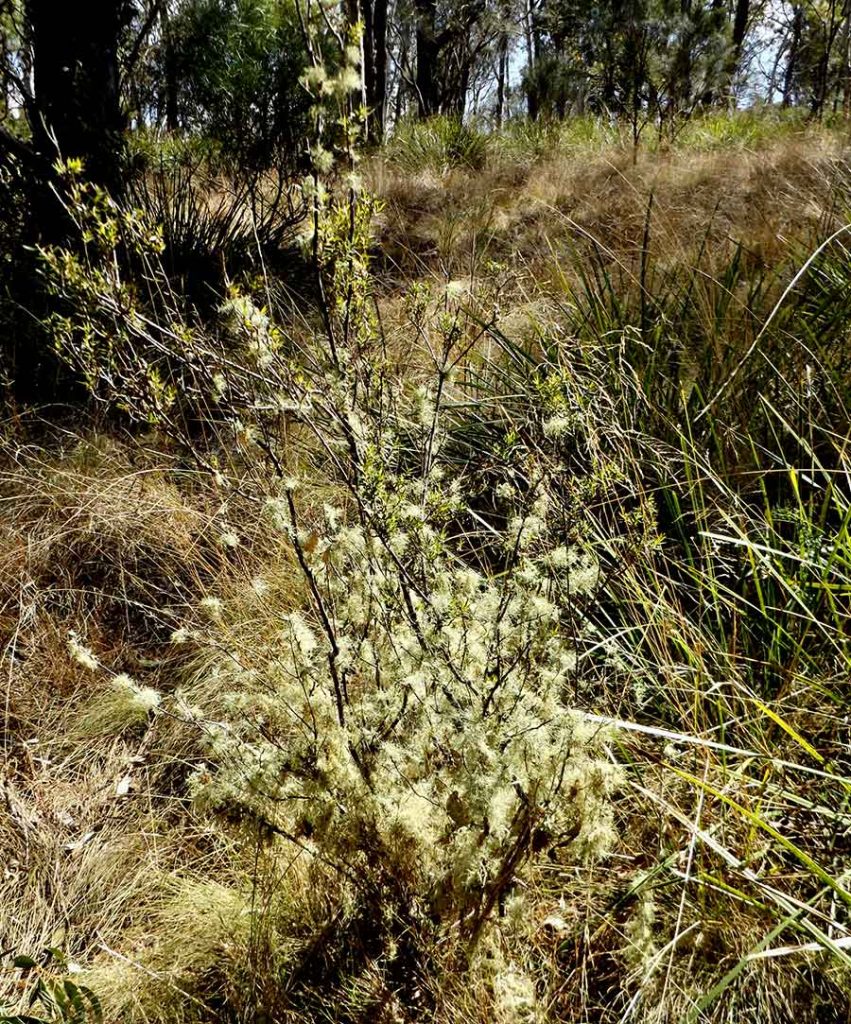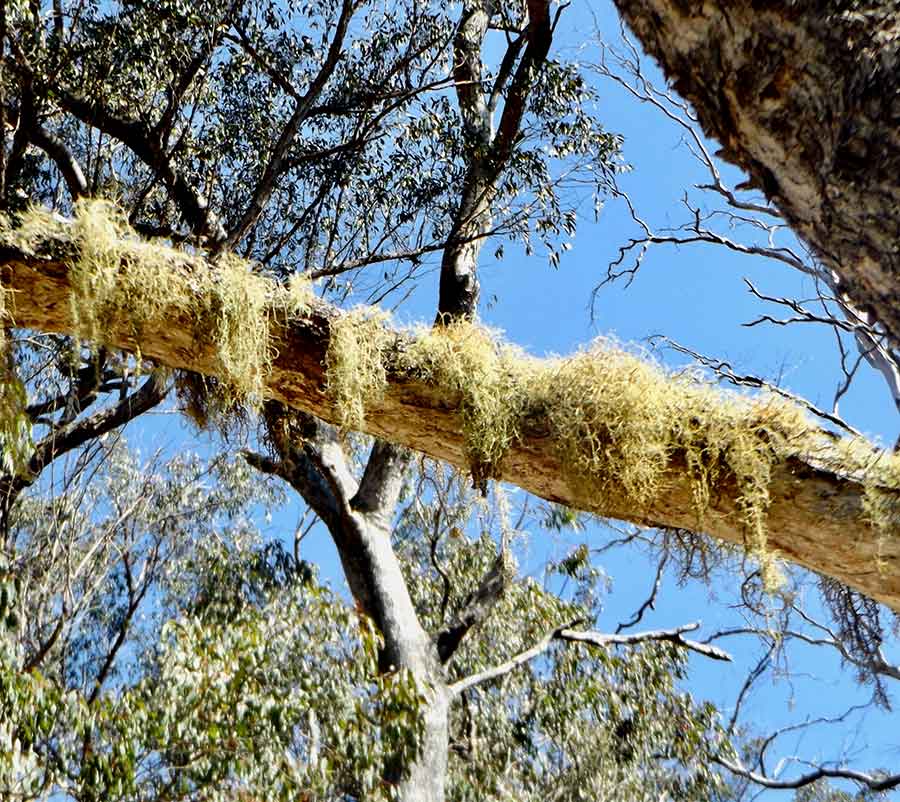On the rising slopes above the campground, many surprising spring shows were tucked amongst the rocks. Some, like these White Everlastings or Paper Daisies (Coronidium elatum), only appeared in a few places.
Overall, white, yellow and purple seemed to be the chosen colour palette.
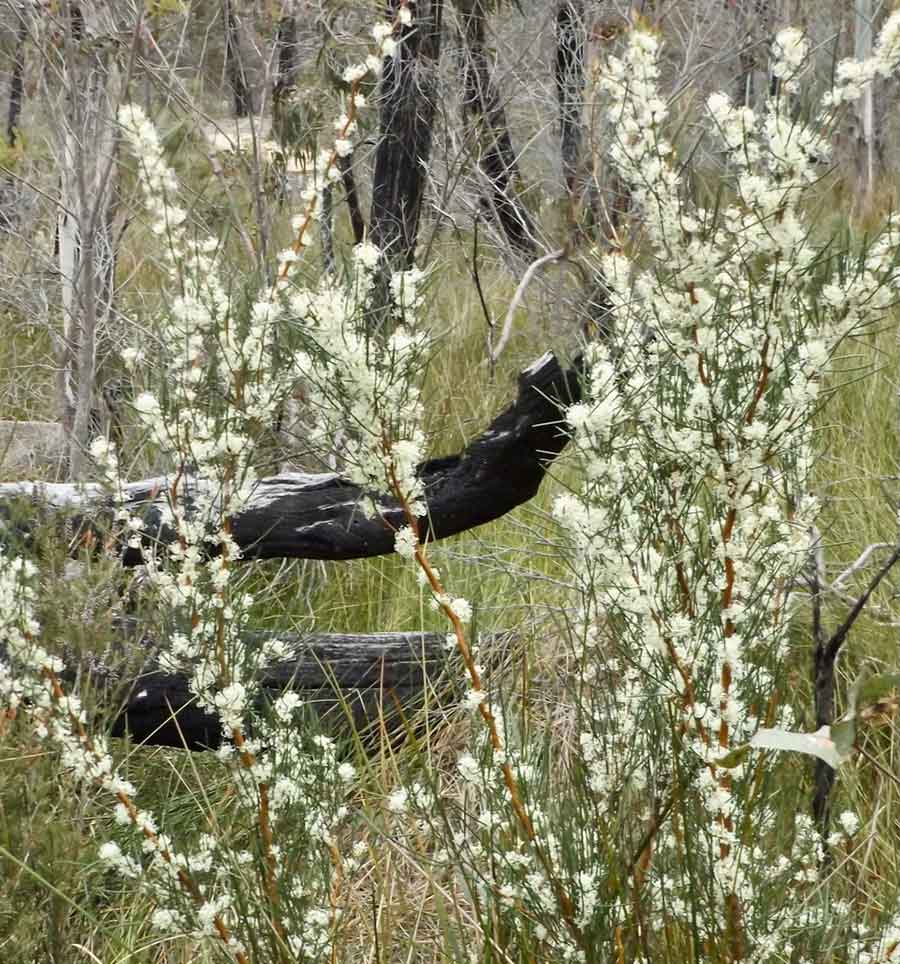
The swamp below the rocks was dotted with hundreds of these shrubs, their delicate creamy blossoms looking like garden escapees, too pretty to be growing wild. But they are Small-fruited Hakea (Hakea microcarpa), which like sub-alpine swamps.
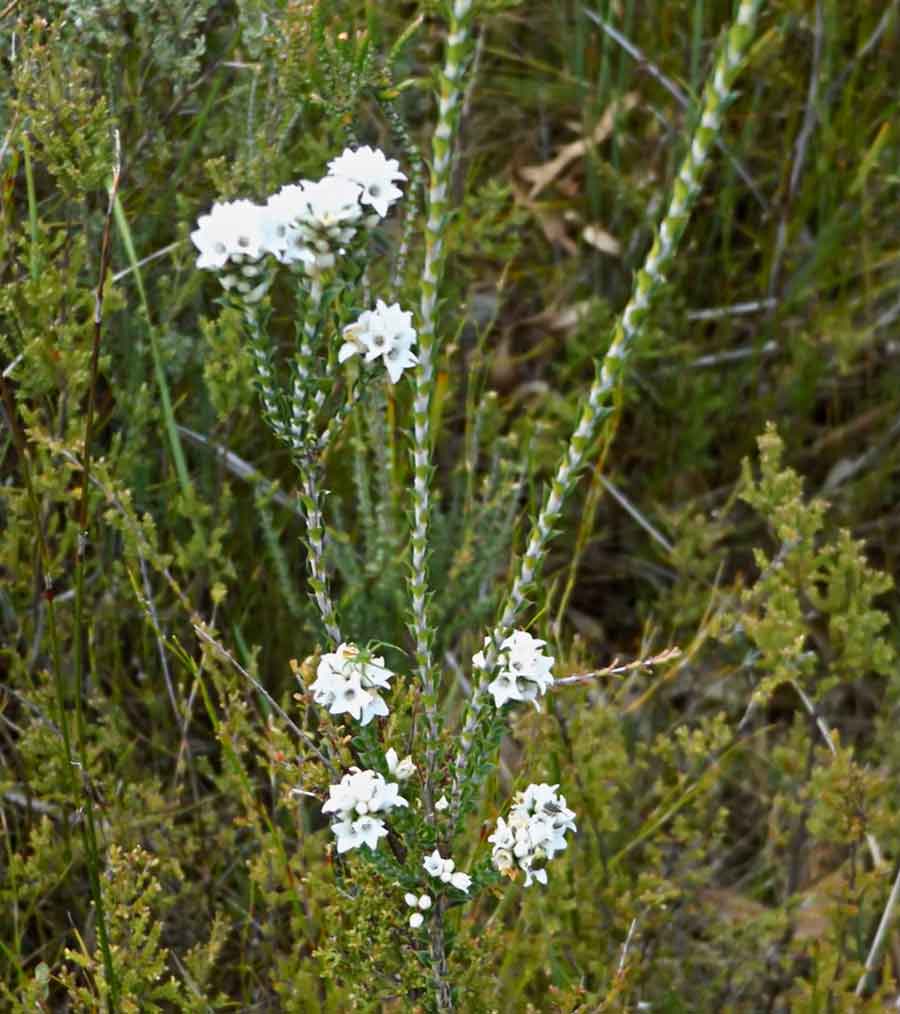
Much less common, to the extent that this was the only one I saw, was another white flowering plant, Coral Heath (Epacris microphylla), with its unusual stems, clasped by dozens of tiny leaves.
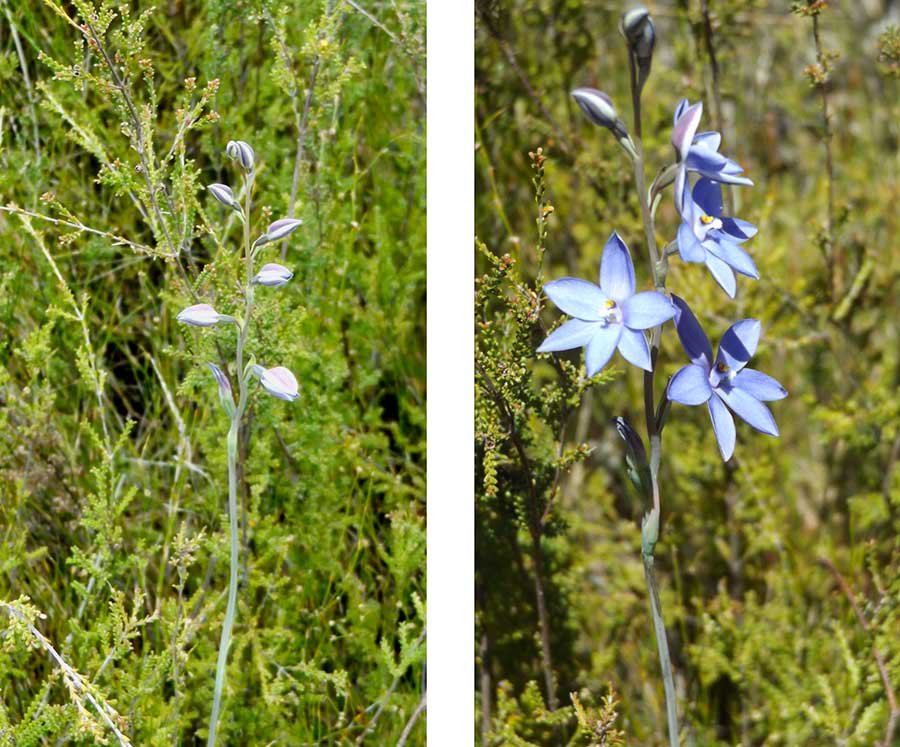
I had noticed these shy lilac buds the day before, but next day they were blooming and blue; Thelymitra ixioides, a single-stalked ground orchid that likes to open on warm sunny days.
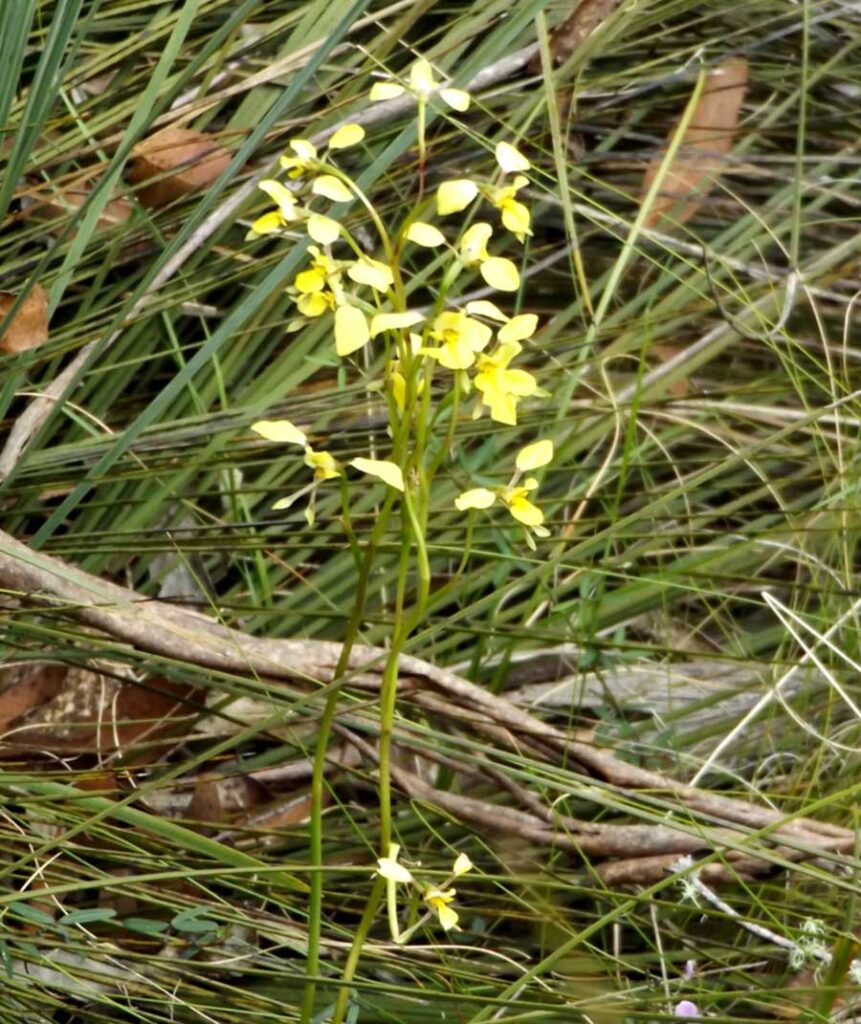
I saw very few other orchids, such as these Donkeys’ Ears ones, but they had no chance in the major claims to yellow.
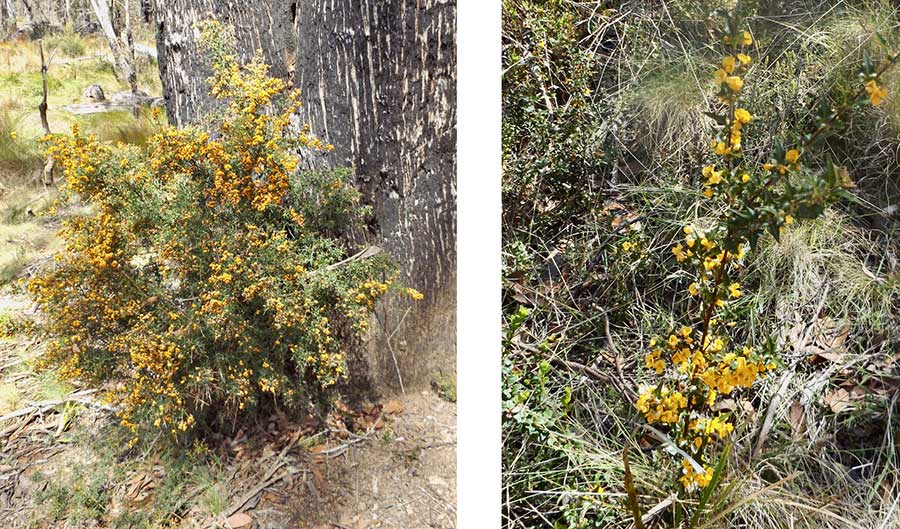
The slopes were carpeted with shrubs of the sort we always called ‘Eggs-and-bacon’ as kids, pea flower families, of which there are hundreds of types. There were three discernible sorts here, some prickly, some not and some with more red in their centres (more tomato sauce, as we’d say).
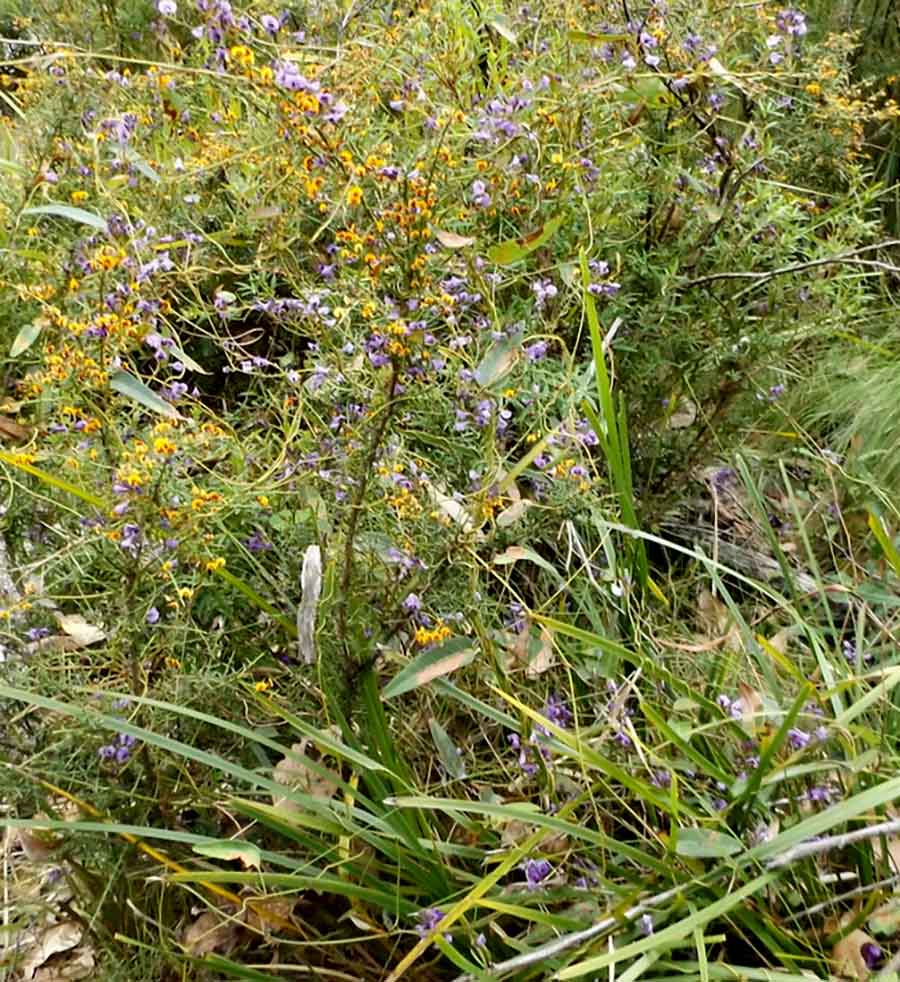
Some were threaded through with purple Hardenbergia.
With all these flowers to see, it was hard to watch my feet on the rocky tracks, let alone look up to the stunning rocks. But I did stop to look up, so rocks and giant boulders will be my next post. So, so much to see!
